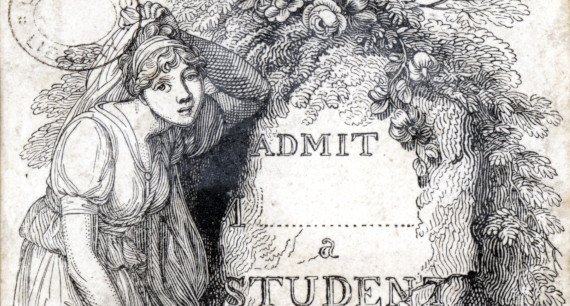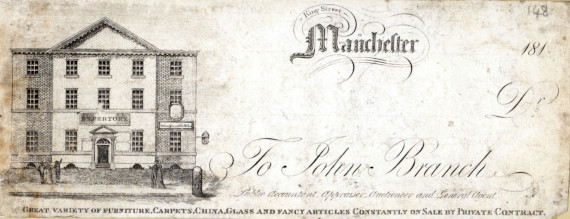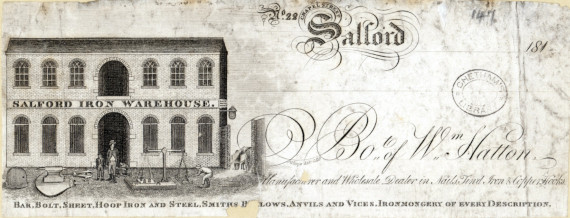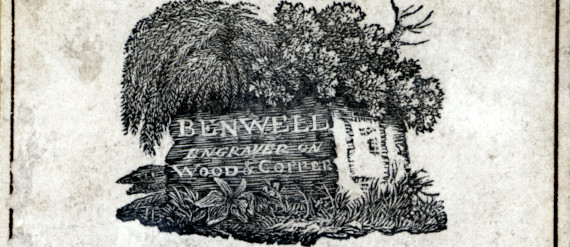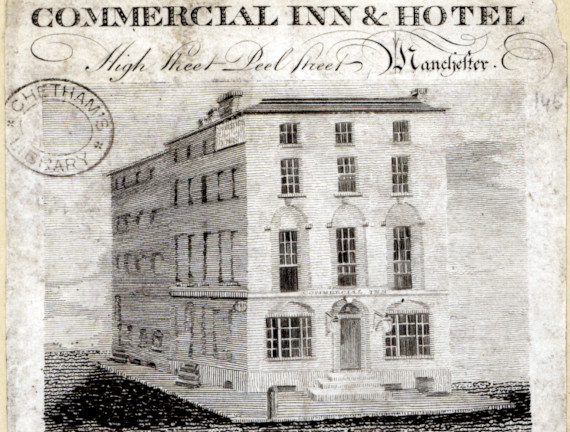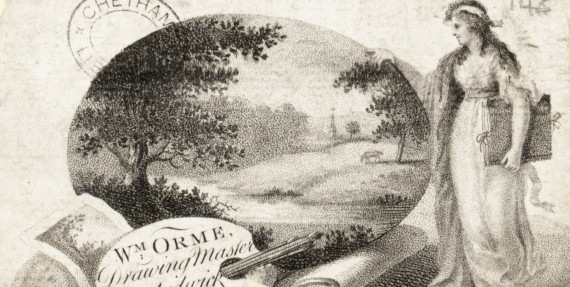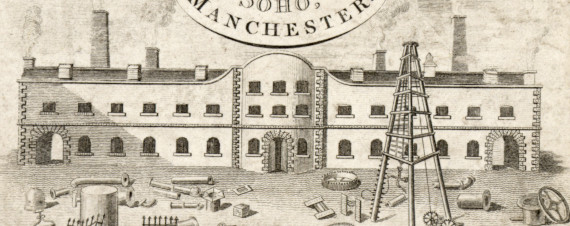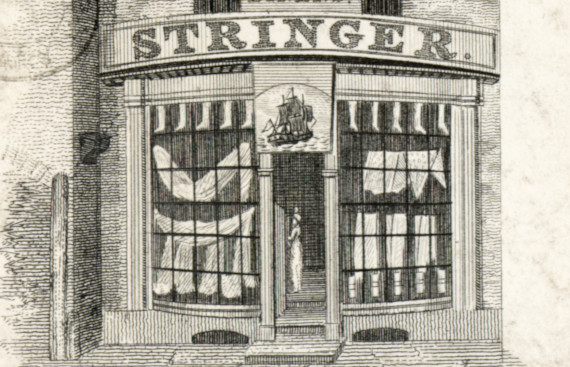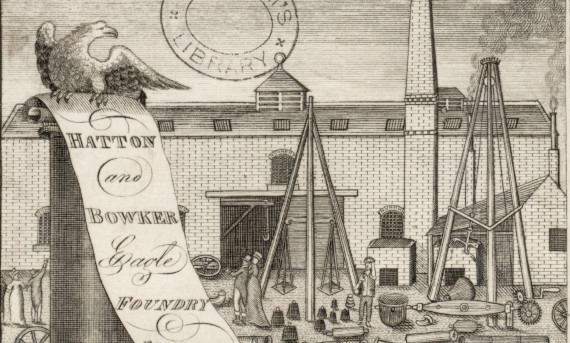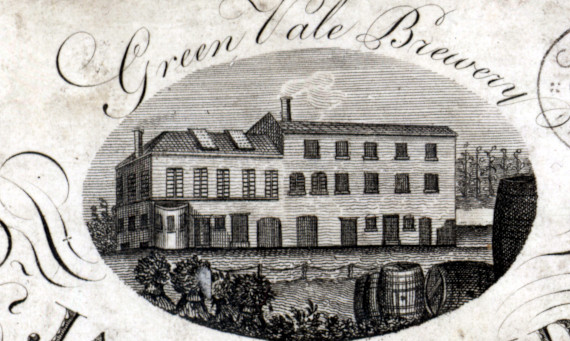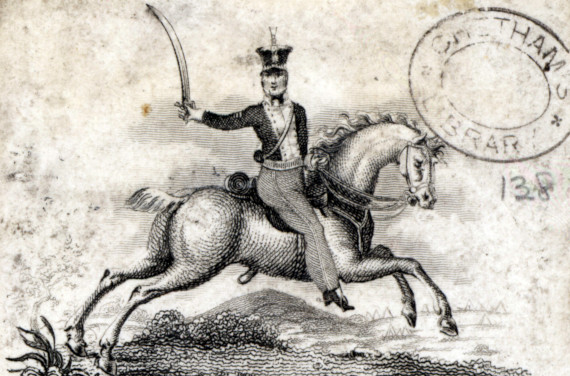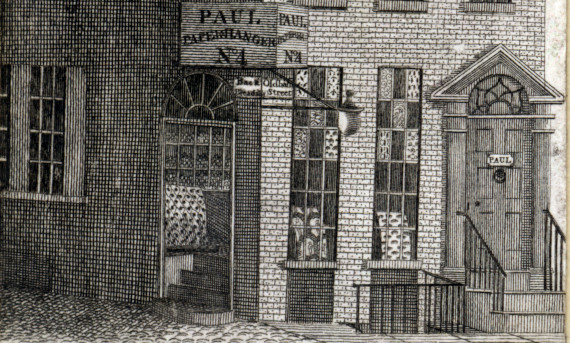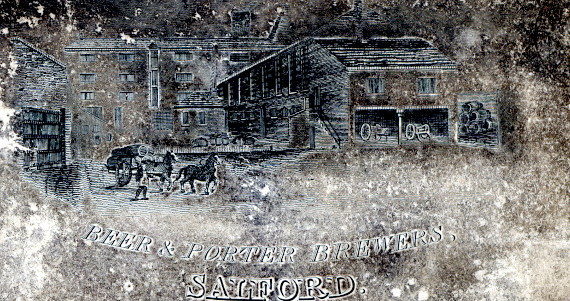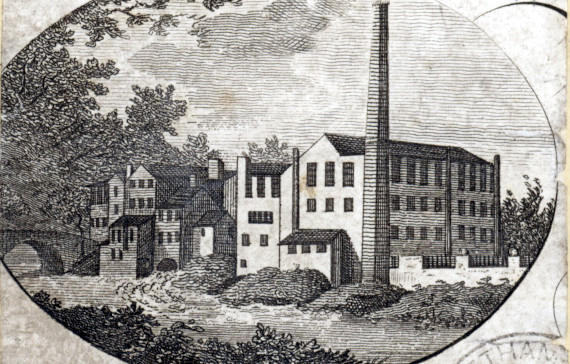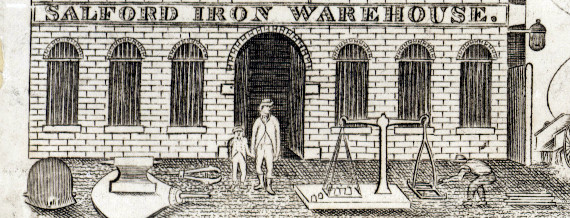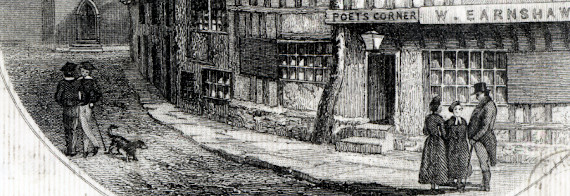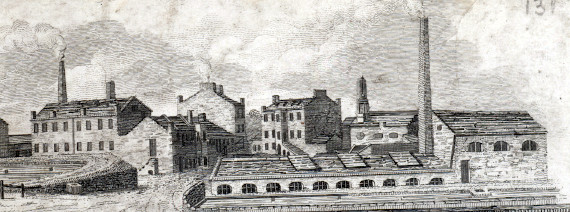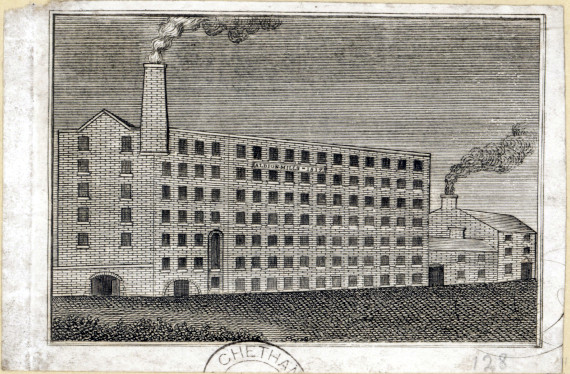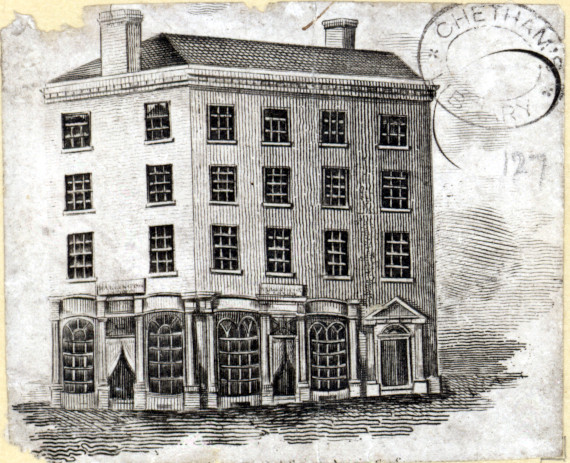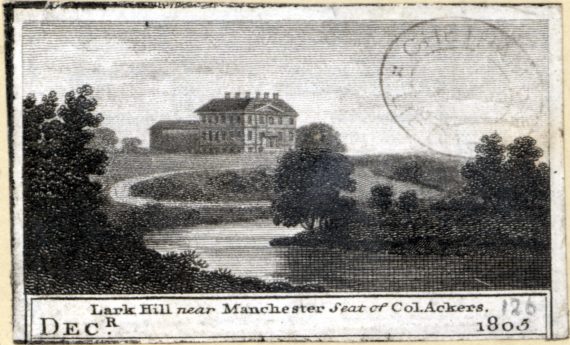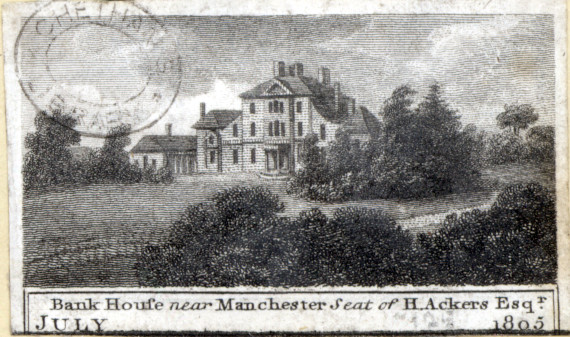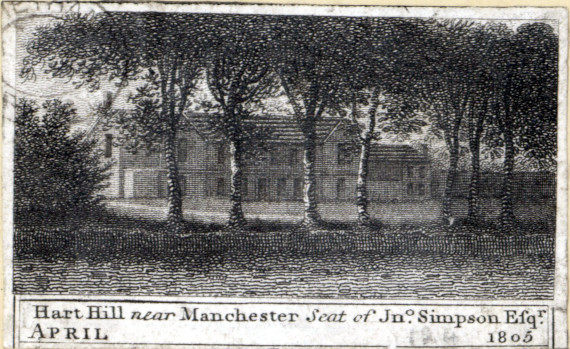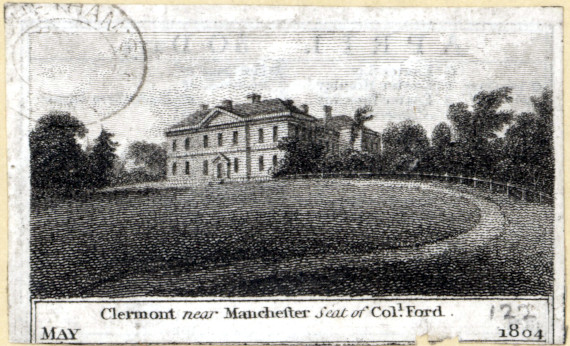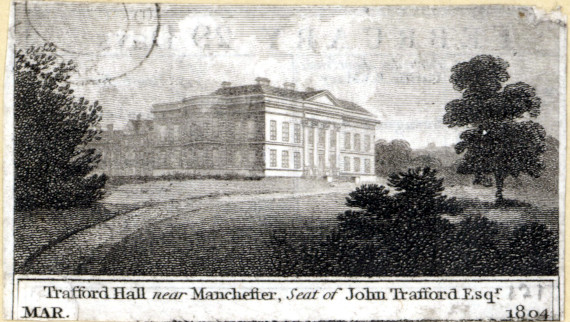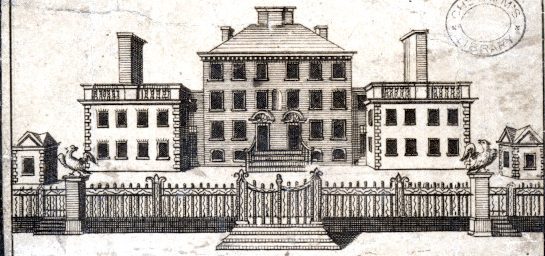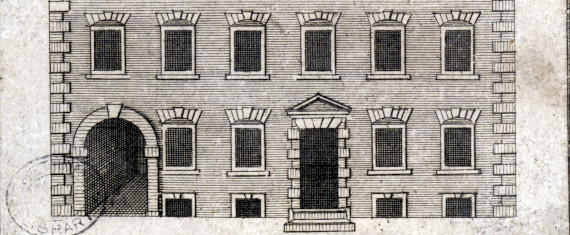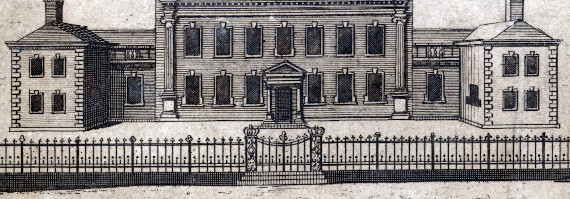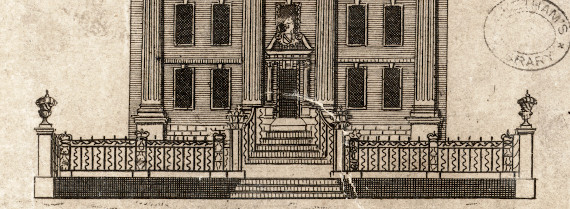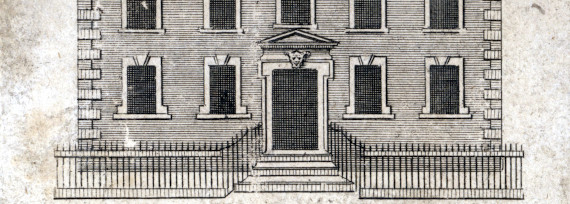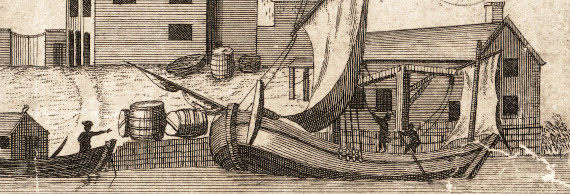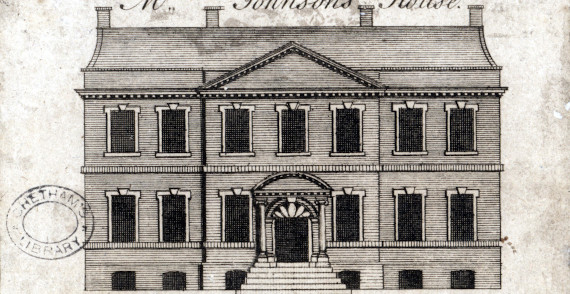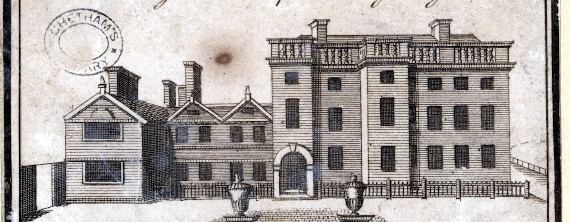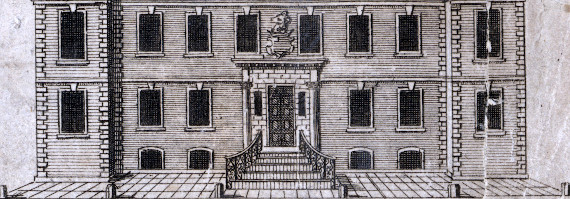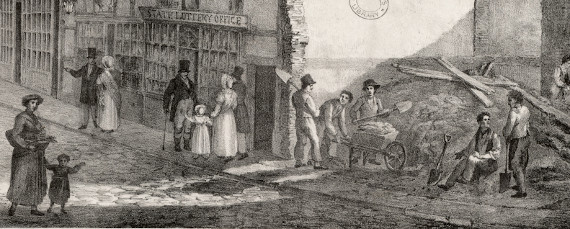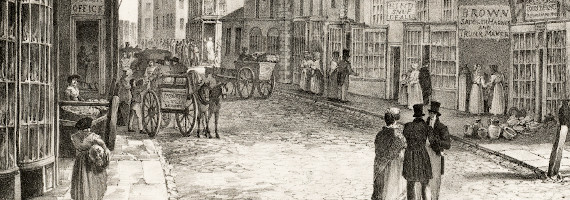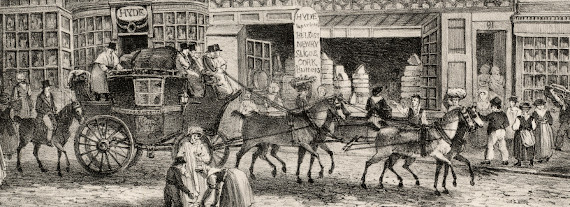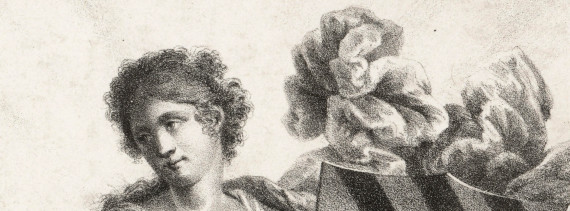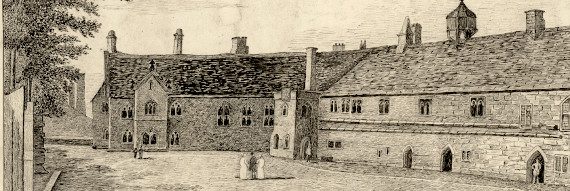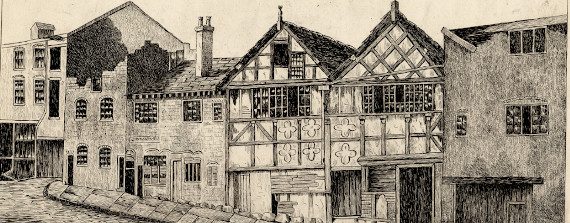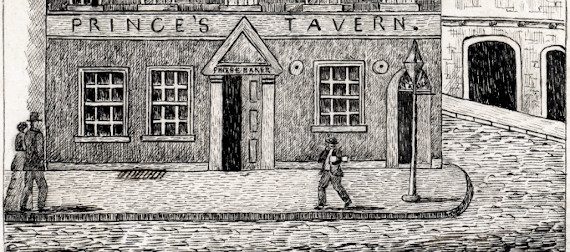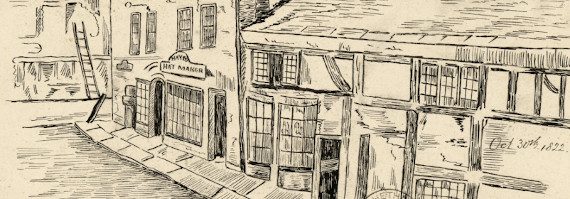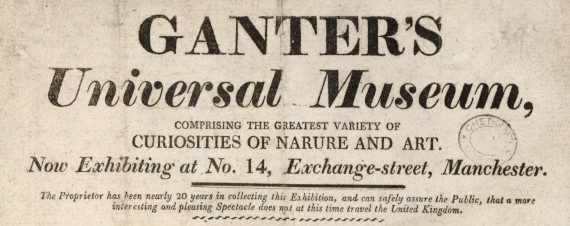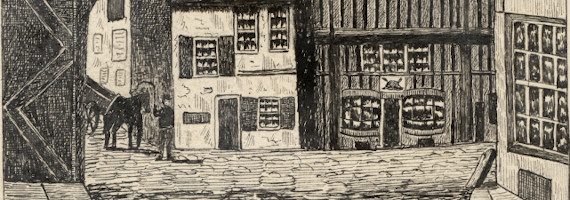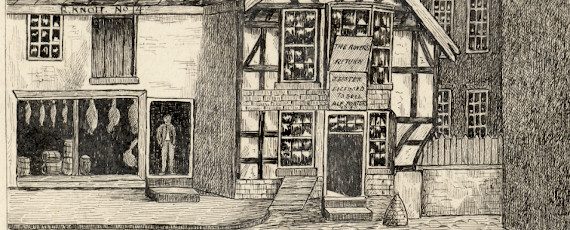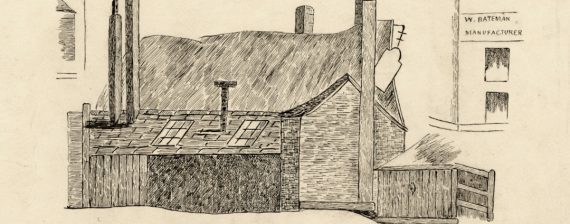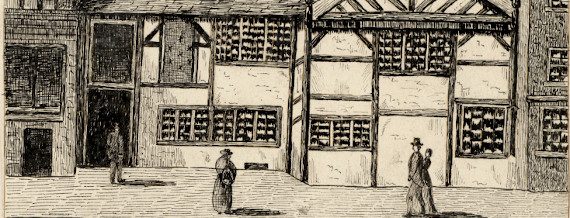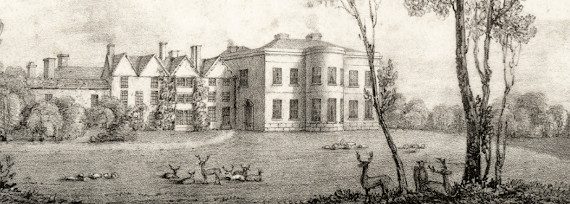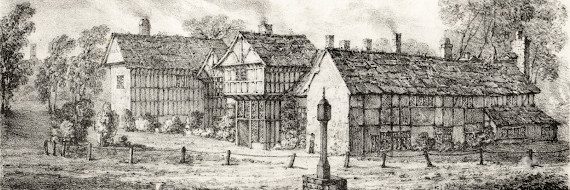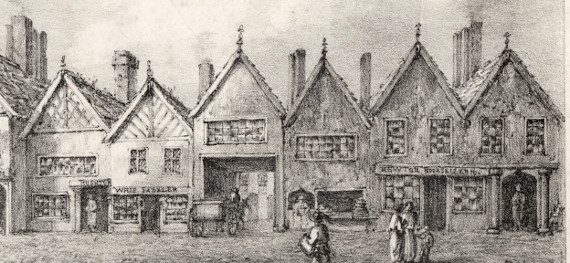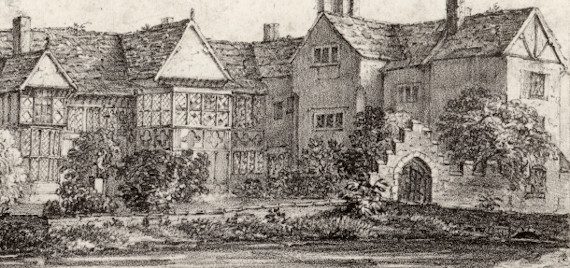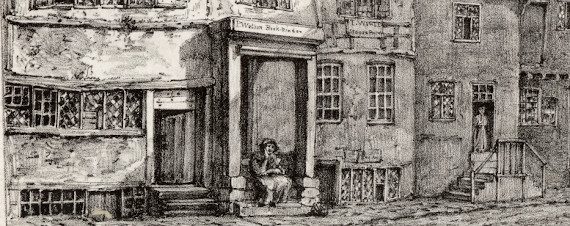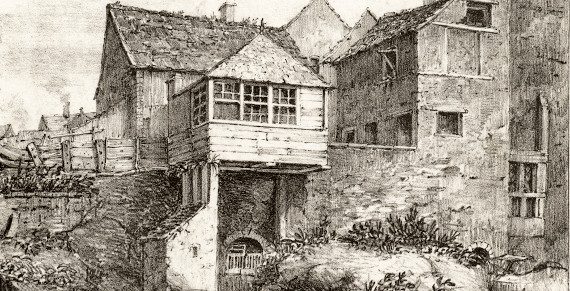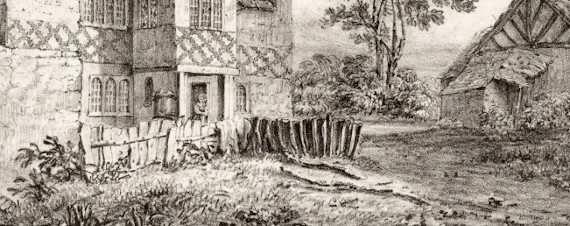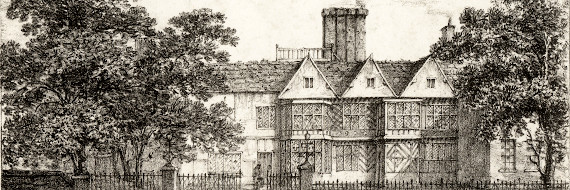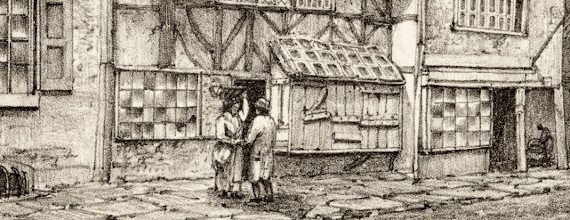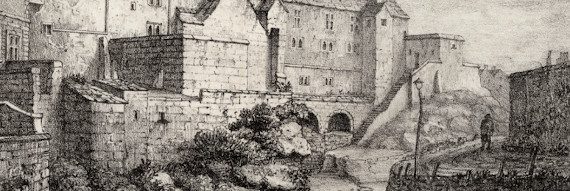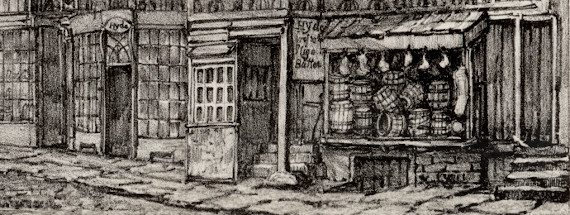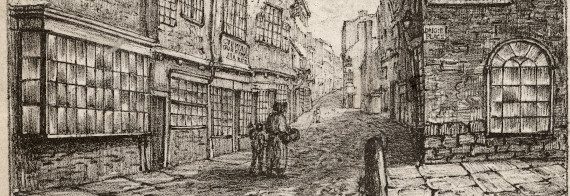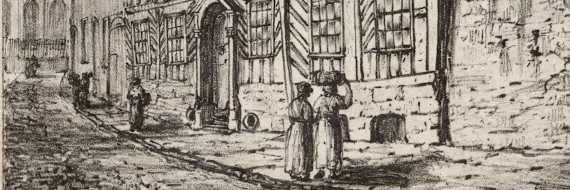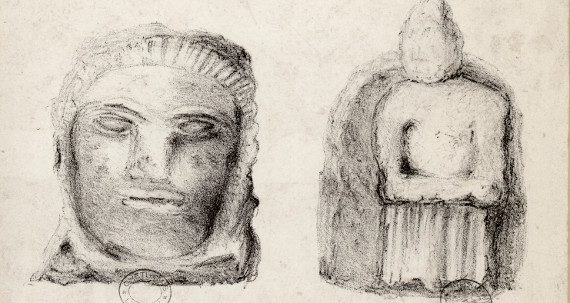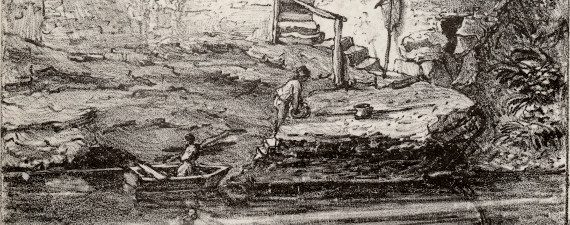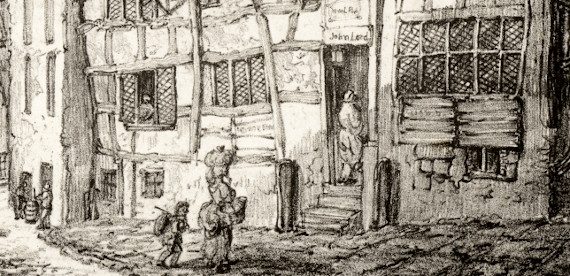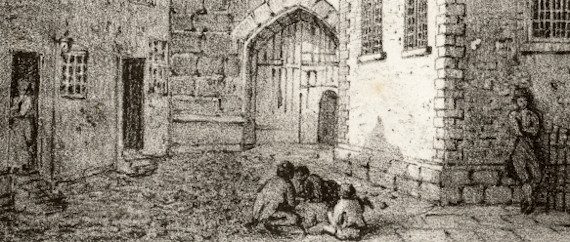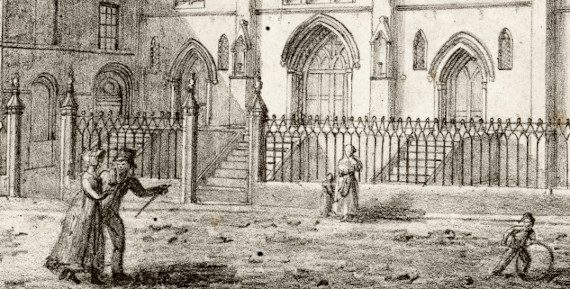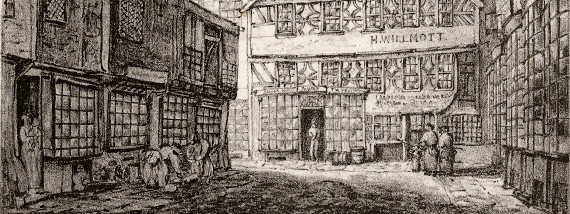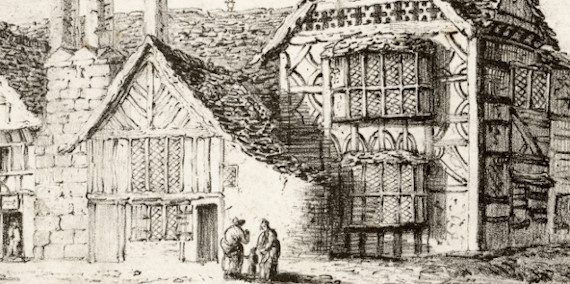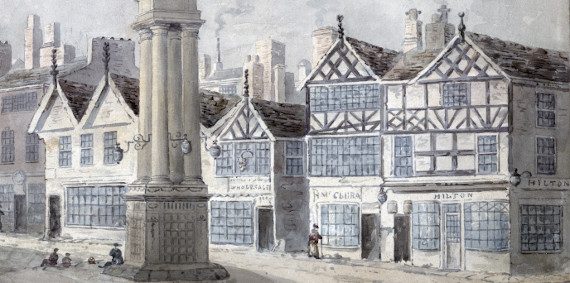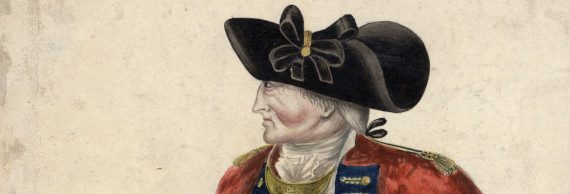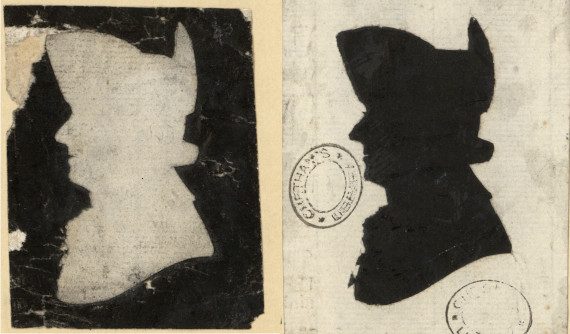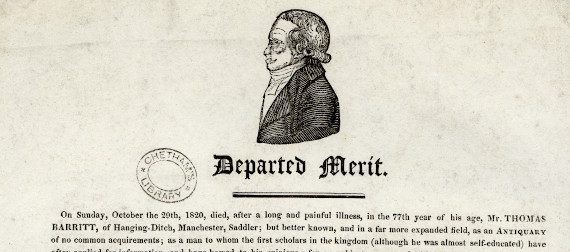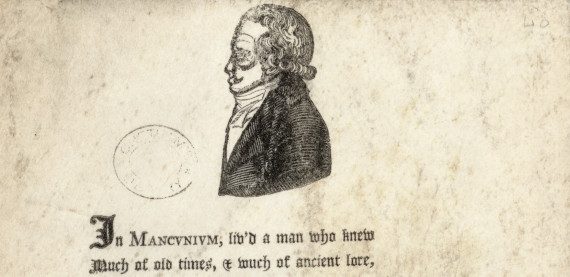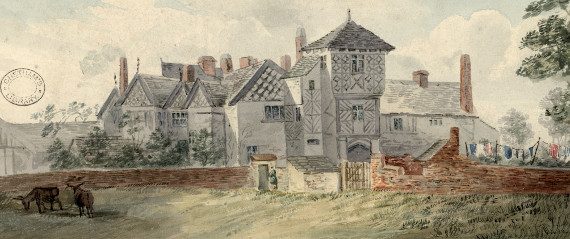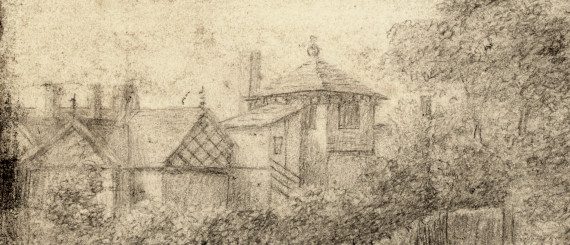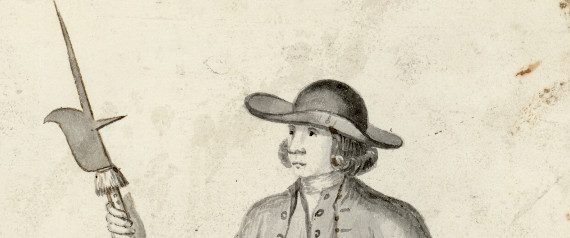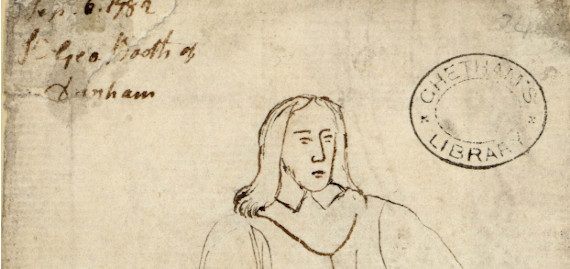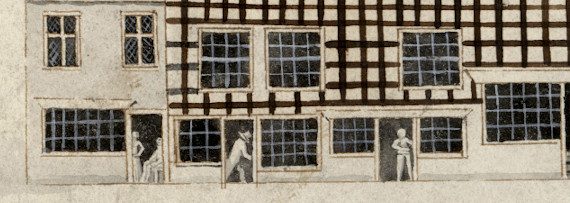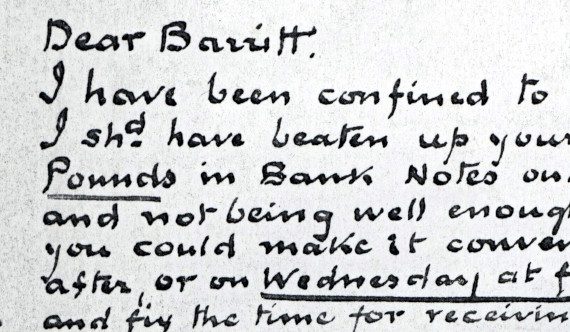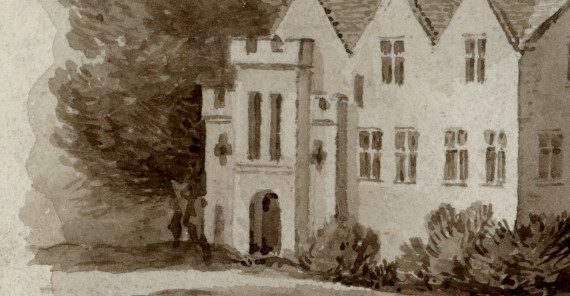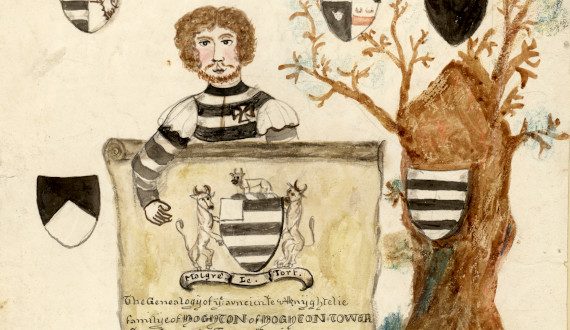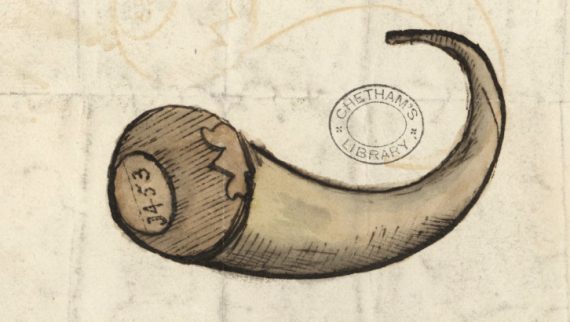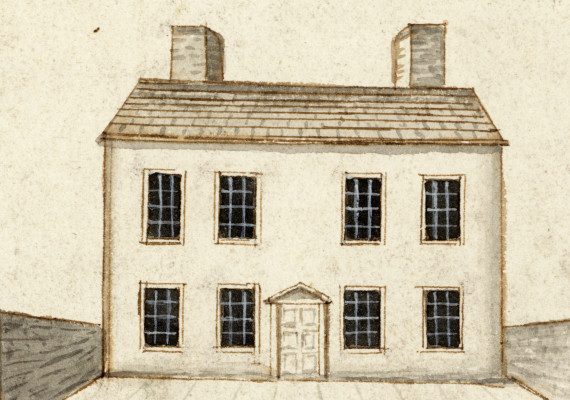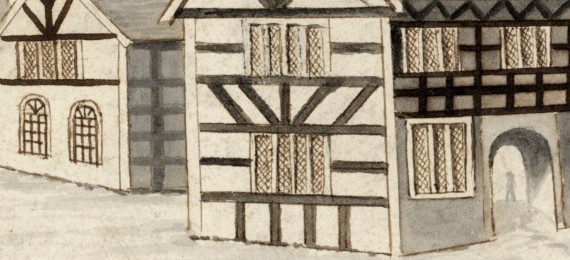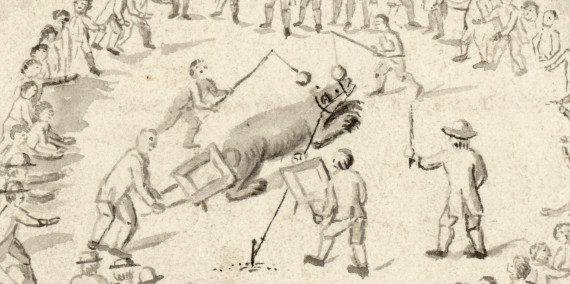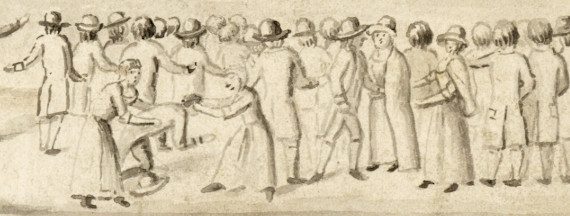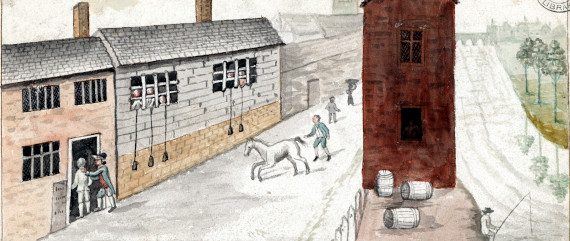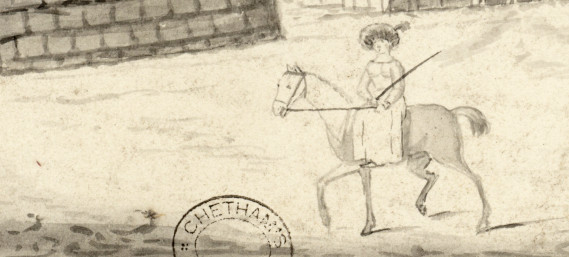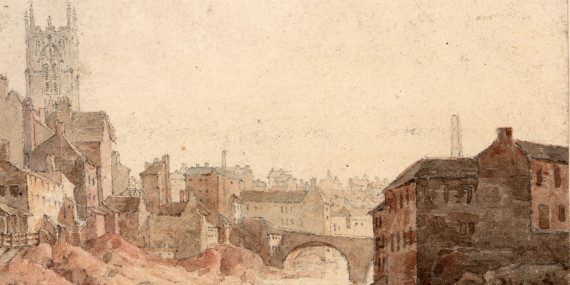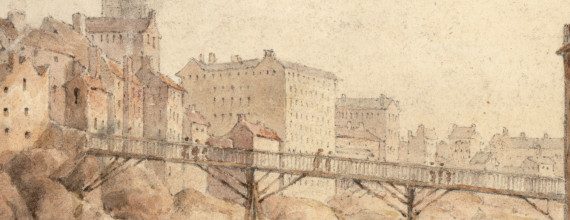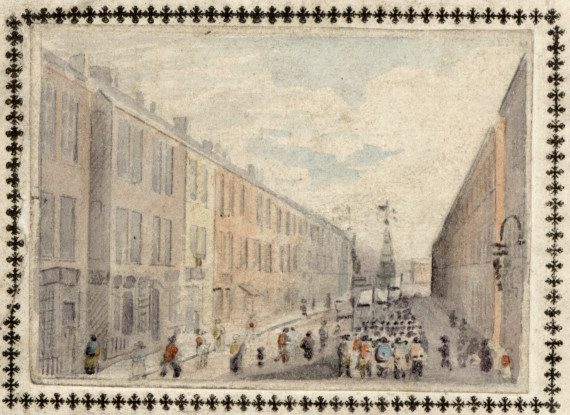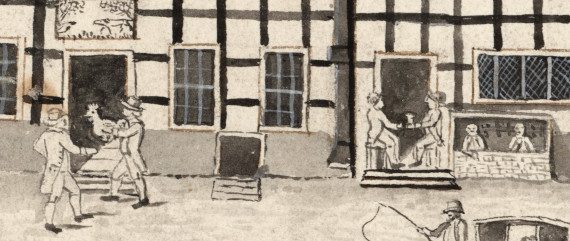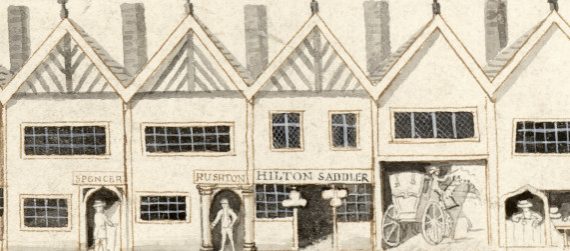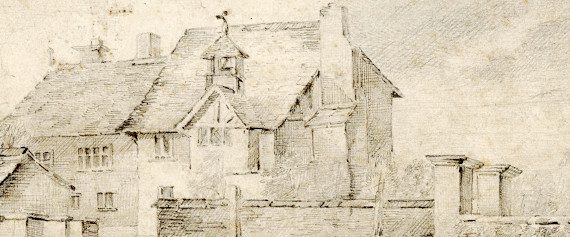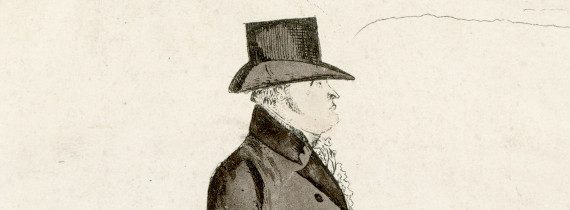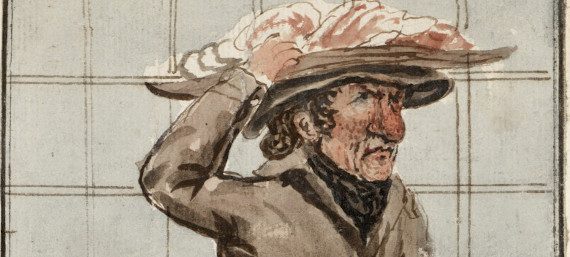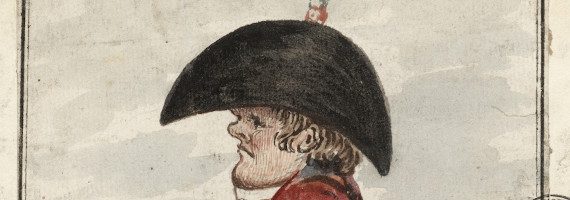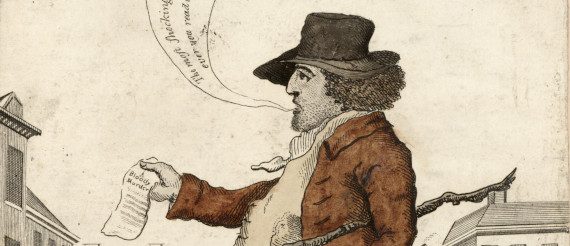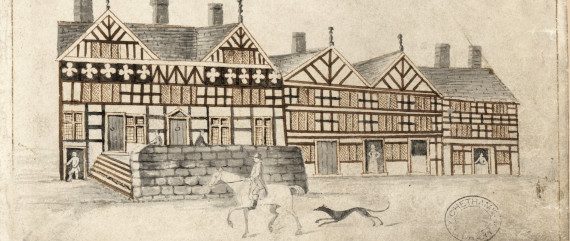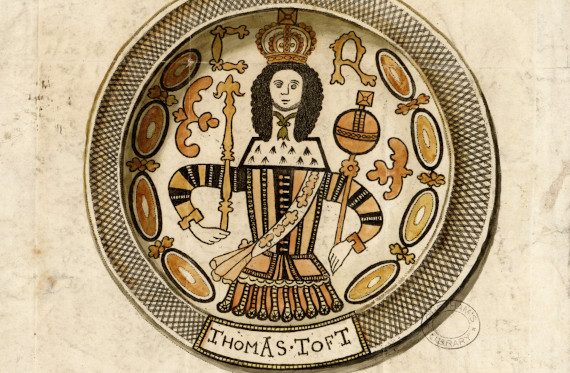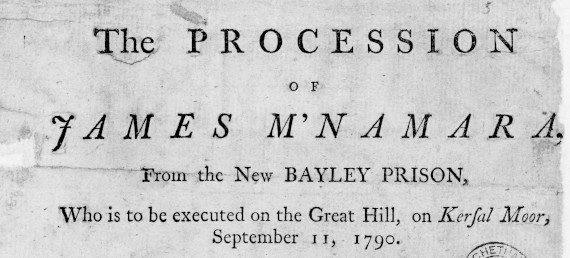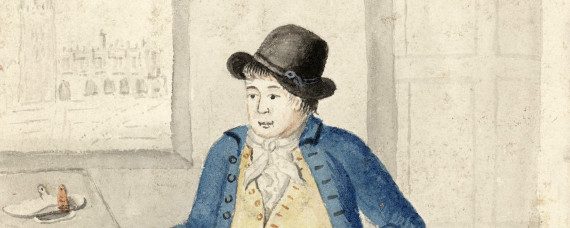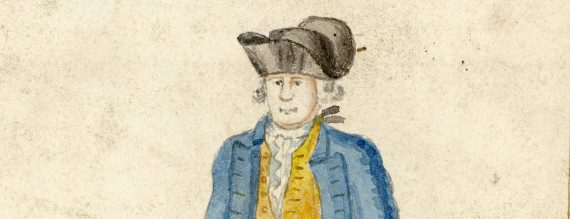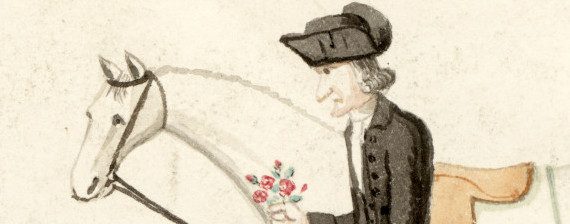- About
- Visiting
- What’s On
- Venue hire
- Catalogues
- Collections
- 101 Treasures of Chetham’s
- Digital Resources
- The Flowers of Histories
- A Book of Hours from France
- The Manchester Scrapbook
- Thomas Barritt of Manchester
- Art Treasures Examiner of 1857
- Manchester Association for Constitutional Order
- The North Western Museum of Science and Industry: Some Reminiscences by Richard Hills
- Criminal Manchester
- The Cup of Destiny
- Athenaeum Souvenir
- Middle English Manuscripts
- Manchester and Liverpool of Today
- Hollingworth’s Mancuniensis
- Memoir of Cecil Wray
- William Seward’s Diary
- The Anti-Monopolist
- Fishwick’s History of Rochdale
- Knyvett’s Defence of this Realm
- Tractatus de Nigromantia
- Axon Ballads
- Printed Books & Ephemera
- Archives & Manuscripts
- Prints and Photographs
- Blog
- Support us
The Manchester Scrapbook
A guided browse through a slice of Manchester history
For #MuseumFromHome in May 2020, and as a way of being in while we’re out, we decided to Tweet and Instagram an image every weekday from the Manchester Scrapbook, given to the Library in 1838 by its compiler, Francis Egerton, 1st Earl of Ellesmere (good Wikipedia bio here). There’s a little more on some of the Library’s scrapbooks here. As posts like that tend to get buried, and because people seem to have been enjoying the images, we’ll add the items here as they appear on social media. Click through for the full image. Apologies to those with a stronger level of interest that we’re not always able to give you chapter and verse on some of these – we can’t get at the usual lists and research materials just now. We’ll make the images a permanent part of the website as soon as time permits, and bring out some of the many stories they tell. Please do contact us, however, with any questions (better still, answers) and we’ll try to answer them or incorporate them as circumstances permit. We’ll just give the captions as posted at present, and hope to add detail and more interpretation in the future. So that you’ll see the newly added images first, we’ll follow Hollywood practice and announce things in reverse order; please go to the foot of the page and scroll up if you’d prefer to start at number one. We’re returning to this Scrapbook series for 2021, and hope this will beguile a few minutes of lockdown for you.
152 : Manchester Academy Ticket
Not a ticket to the Manchester Academy you may be thinking of if you’ve been to gigs at the University of Manchester in the last few decades. There have been a number of organisations that might have been referred to as the ‘Manchester Academy’, but here we seem certain to be dealing with the organisation whose unhappy history is represented by this note in Axon’s Annals of Manchester under the year 1805: ‘Mr W.M. Craig attempted the formation of a Manchester Academy for the Promotion of Fine Arts, but the attempt failed’. William Craig was planning and attempting to raise public interest in a fine art academy basing its scope on that of the Royal Academy itself from 1802 onward. The organisation got a far as issuing its printed rules in 1805, although the formal title differed in them from that noted by Axon: Laws and Regulations of the Manchester Academy for Drawing and Designing. The ‘Admit M ….. a student’ seems to suggest that honorific titles for either sex might be used. The engraving is signed ‘Lee’, but Manchester’s celebrated wood engraver Stanley Lee was not born when this ticket was issued. We haven’t been able to tie the name to an identifiable individual. Does the rather exhausted and drooping-looking muse on the left reflect Craig’s exhaustion with trying to get the Academy off the ground?
151 : Vittore Zanetti, Repository of Arts
This beautiful illustrated admission ticket to the ‘Manchester exhibition of ancient and modern paintings’ was not entrusted to a Manchester engraver, but to F. Eginton of Birmingham, as the tiny signature underneath the studious cherubs tells us. Eginton was active in the 1790s and early 1800s and a capable worker with many larger commissions to his credit. The scene he depicted, like the foundry and and factory bill-heads we’ve been looking at, illustrates some of the many strings to the bow of Vittore Zanetti and his family and the Zanetti and Agnew firm that did so much for those who would have identified themselves as Manchester’s patrons of the arts. Zanetti’s firm advertised variously as carvers and gilders, looking-glasss and picture frame manufacturers, thermometer makers and print sellers. The scene here also brings in telescopes, spectacles, artists’ materials, what looks like music manuscript paper, thermometer barometers, a globe, and – we think – a compass: a ‘Repository of Arts’ indeed! Thomas Agnew (1794-1871) joined Zanetti as an apprentice, and from 1817-1828 the firm was known as Zanetti and Agnew. When Vittore retired in 1828, Joseph Zanetti became junior partner, and with this rebalancing of seniority the firm changed its name to Agnew and Zanetti. After Joseph’s departure in 1837 the company became known by the Agnew name alone and continued with the family name until. The partnership were active publishers, often working with Joseph Pratt of Chapel Walks as their printer. They produced the first issue of the Lancashire Antiquarian Society’s Transactions in 1829, numerous auction catalogues for the sales of private house collections, and the voluminous (and still much used) History of the foundations in Manchester of Christ’s College, Chetham’s Hospital, and the free Grammar School by Samuel Hibbert. Agnew’s shifted their focus of attention to London in 1860, and the family name survives today in Thomas Agnew & Sons following the private sale of the firm in 2013.
150 : Peel & Williams, Iron Founders
The tantalisingly named J.T. Slugg wrote in 1881 in his work Reminiscences of Manchester of Fifty Years Ago that ‘the most noted engineers of the day were Peel, Williams and Peel, of the Soho Foundry, Ancoats, and Galloway, Bowman and Glasgow of Great Bridgewater Street.’ We have a bill-head here from the former, known before 1825 as Peel & Williams. The little cameos of the Phoenix and Soho Foundries are the centre of their business as ‘Iron Founders, Steam Engine Makers, Cotton and Worsted Roller Manufacturers &c.’ and the bill provides for specification of the goods, their weight in tons, hundredweight, quarters and pounds, and their prices and totals in pounds, shillings and pence. Like the other foundries we’ve seen, yet on a grander scale, they existed primarily to furnish the cotton manufacturer of Lancashire (and the wool worsted manufacturers of the West Riding) with the machinery to set up the ever larger steam-driven, fireproof mills of the age. The firm was to prove a long lasting and successful one; Slugg’s footnote tells us ‘Mr George Peel still survives, having been born in Halliwell Street, in 1803’. This George Peel (junior, son of George senior, the first Peel in the company name) was cousin to the towering figure of Sir Robert Peel. The firm was established and active by 1800, and perhaps their most significant work was that of providing new Watt-pattern static steam engines to provide the power to colliery and to textile mill machinery. William Ward Williams (b. 1772) was the more experienced in the iron founding trade, having been through a couple of short-lived partnerships before setting up with George Peel at Miller Street. Musson and Robinson, who trace the history in Science and Technology in the Industrial Revolution, propose that Peel may have been more important for the capital he and other members of the family brought to the table than any knowledge of iron founding. There’s an excellent summary history on the invaluable Grace’s Guide, including specimens of the firm’s early advertising, such as this from 1802:
1802 Advertisement: ‘JOURNEYMEN IRON-FOUNDERS – Good, Steady Hands, will meet with a permanent Situation, and liberal Wages, by applying to Messrs. Peel, Williams and Co. iron-founders, Manchester.’
The company’s steam engines appear in advertisements from the sales of mills all over the area, a testimony to how central Peel and Williams engines were to the mass production factories that were to dominate Manchester and region’s nineteenth century.
149 : John Barge & Co, Calico Printers

Re
With this bill-head we find ourselves with one of Manchester and district’s most important and widely exported product, printed cotton calico cloth. Following the invention of roller printing of dyes onto the cloth in 1783, replacing blocks that required manual aligning, the trade became ideal for the kind of mass production already beginning to dominate spinning and weaving of cotton. (See an excellent blog by Sue Wilkes here.) This brought the price of patterned fabric within the reach of a much wider domestic and international market, and the trade flourished. John Barge’s works were at Lower Broughton, and became a concern involving several members of the family. Their warehouse was on Peel Street. John Barge was, like the engraver Bottomley, a member of Salford’s Swedenborgian New Church and was a founder member of the committee charged with setting up a New Church denominational day school in 1824. Companies such as Barge & Co. were large concerns, and had political and social as well as economic effects. The company numbered a former MP on their staff of cashiers.
148 : John Branch, Auctioneer
John Branch’s grand ‘Repertory’ on King Street is today’s bill-head, again printed to serve the period 1810-19. The image of the splendid pedimented premises provided by the commercial artist has admiring passers-by pointing up at the business. There’s certainly plenty to admire: Branch is a ‘Public Accountant, Appraiser, Auctioneer and General Agent’, organising sales of a ‘Great Variety of Furniture, Carpets, China, Glass and Fancy Articles Constantly on Sale by Private Contract.’ A John Branch, perhaps the grandson of our John, was acting as an auctioneer in Liverpool as late as 1872. As further evidence of his diverse activities, our John Branch was also the business partner of steel maker James Jackson between 1802 and 1804. What is hard to read in the scale of image we can conveniently provide on the web is the microscopically small (yet perfectly engraved) plate on the right-hand side of the house that lets us know Branch is also an agent for the Albion Fire and Life Assurance Company, a major national insurance concern founded in 1805 and bought out by Eagle Insurance in 1858. Auctions, often ordered by courts in cases such as bankruptcy as well as by private individuals seeking to liquidate assets, played their part in managing the burgeoning commercial life of the Georgian town; all the more was insurance increasingly a vital part of protecting the increasingly large scale investments that were required in setting up the mills and foundries whose bill-head productions we have seen in the last few posts.
147 : Salford Iron Warehouse
We’ve seen an earlier form of this bill-head at number 133, and met the Hattons again at number 140. With this cutting, we’re lucky to have a more complete form of the head, and with that comes a great deal more information: the full address at 22, Chapel Street, Salford; that the batch was printed for use in the decade 1810-19; that William Hatton’s description of his business at the warehouse is that of ‘Manufacturer and Wholesale Dealer in Nails, Tin’d, Iron & Copper Hooks, Bar, Bolt, Sheet, Hoop Iron and Steel, Smiths Bellows, Anvils and Vices, Ironmongery of Every Description’. The image is signed by Alsope (whose work we saw for Hatton and Bowker’s Eagle Foundry at number 140), and he has evidently been asked to re-work the copper plate from which the bill forms were printed. The father and son looking about them in front of the main door to the warehouse, and the figure of the worker remain much the same, as does the repertoire of goods. The plate has much more sophisticated shading than before, however, and the pair have now acquired a dog. Impressively, given the tiny space, Alsope has added the street-sign ‘Back Water Street’ to the plaque on the right-hand gable end of the warehouse. These essentially ephemeral receipts and bills continue to give us information we could often get nowhere else.
146 : Benwell, Engraver on Wood & Copper
J.M. Benwell makes his offer of artistic services to the public in a rather franker way than we have seen in the case of William Orme, and even provides some price guidance in his advertisement. It might surprise some to find that it cost more to provide a portrait of your horse than of yourself or those dear to you; presumably the human likenesses are limited to the profile, or perhaps don’t demand ‘the greatest exactness’. In terms of techniques for printing, he offers both wood and copper engraving. Engraving on copper plates inolved an intaglio method of printing, in which the ink for transfer to the paper was held in the grooves cut by the engraver in making the design, and needed to be printed in a special press that applied high pressure to push the fibres of the paper down into the cuts. This method could not be used in the same press as the moveable types of letterpress, the main means of printing language material, and if letterpress and engraving were needed on the same sheet, it would have to go through both processes separately. Woodcuts, on the other hand, involved cutting away the wood along the grain of a block, removing everything that was not required to print. It could be printed in the same process as letterpress by making the woodblock the same height as the moveable types, but it was not capable of representing the fine detail that copper engraving would. Wood engraving, by contrast, involved cutting the design into the end grain of a suitable hardwood such as box-wood with engravers’ fine tools, and could both accept fine detail and be printed with letterpress. That’s exactly what we see here, with M. Wardle including two of Benwell’s wood engravings with the letterpress to produce this attractive advert in a single pass through the conventional printing press. This was the age of wood engraving par excellence, as one of its earliest and most talented proponents, Thomas Bewick (1753–1828) was leading the way with his beautiful representations of the natural world.
145 : Commercial Inn & Hotel
This pretty little advertisement presents a glimpse of another facet of the life of Georgian Manchester, the growth of business travel. The factories and foundries we have seen so far had to send their representatives out for all kinds of purposes: sales, buying, meetings were a staple then as now. In the pre-railway age, H. Webb has evidently tried to provide everything the traveller or local businessman might need, from overnight accomodation to meeting rooms to coffee room. No mere provincial coffee room, either, but one with the truly metropolitan feel of the ‘London Coffee Rooms’. Webb is careful to try to tempt those arriving from the capital or elsewhere on the stage coach routes by assuring them there will be the staff on hand at all hours, and provides stables and ‘carefull Drivers’; were reckless ones widely feared? The almost microscopic signature of the engraver, ‘Bottomley sc[ulpsit]’, seems likely to relate to the family of George Bottomley (b. 1793), of Rusham Lane, who was a worshipper at the Swedenborgian New Jerusalem Temple in Salford. He and his father were both engravers, and George’s large family were baptised at the Temple.
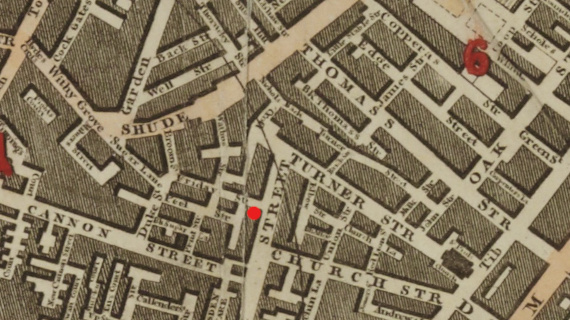
The Commercial Inn must have stood approximately on the red dot, fronting High Street. Detail from 1824 Pigot plan
144 : Medlock New Mill
This bill-head takes us into the realms of the new and increasingly dominant large, purpose-built cotton spinning mill of the kind that the name Manchester conjures up for many. With six storeys, a large engine house containing the races that took the steam power to the various floors, and an impressive floor area, the building has the look that came to typify Manchester mills and those in towns such as Oldham. Only the hipped roof, as opposed to the later flat, water reservoir room distinguishes it from mills being built a century later. The bill-head locates it for us on York Street and Oxford Road. Thanks to some careful work by David R. Bellhouse, we can also date this accurately to between 1806, when the historical David Bellhouse extended his construction business as a partner in the construction and management of the Medlock New Mill, the name for both the buildiing and the business partnership, and 1819, when the Runcorn, Bellhouse and Runcorn firm was dissolved. Bellhouse went on to expand the firm with his sons as partners, and added two further mills to the same site before 1851, a complex that became known as Mynshull Mills. At the time this attractive little picture was drawn, the working day was fourteen hours, with a six day week.
143 : William Orme, Drawing Master
So used are we now to being able to create and distribute full-colour images with equipment that fits in a pocket, it can be a little hard to remember that capturing any object or scene relied entirely on the skill of human hand and eye. Reproducing such an image relied on a highly perfected, but also highly demanding, set of tools and techniques involving printing from blocks and plates, and required equipment, training and experience. The drawing master played an important part in cultivating the skills of the artist. Those who hoped to live by their drawing skills (such as some of the commercial artists whose work we have been seeing) were perhaps outnumbered by those learning to draw as a polite accomplishment. Titles such Every Lady her own Drawing Master (surely no coincidence that it was published by Longman, Hurst, Rees, Orme, and Brown in 1818) attest to the desire of the leisured classes to use time creatively. William Orme (1771–1854) was the child of another Manchester fustian merchant, Aaron Orme, and one of at least thirteen. Other brothers included Daniel and Edward, also involved in the art world and in publishing. All three moved between Manchester and London during their careers. Edward published William’s Rudiments of landscape drawing, and perspective dedicated to the Society for the Encouragement of Arts &c. &c. in 1802, and his Studies from nature : arranged as progressive lessons for instruction in the art of drawing landscape in 1810. An 1806 print after an original by Orme tells us that he must have been present (or at least so in vivid imagination) at Nelson’s funeral, and other watercolours including one of a romantic looking Collyhurst survive in various collections. The smiling and beatific muse, her portfolio no doubt full of beautiful work produced under William’s tutelage, looks lovingly out over the idealised landscape; Ardwick itself was indeed green at this point, so perhaps Orme has not overstretched himself in this invitation to would-be artists.
142 : Whitehead and Co., Brass and Iron Founders
We’ve already seen evidence of the growth of the iron foundry trade in numbers 133 and 140, and here with David Whitehead and Co we have another substantial firm, this time including brass casting, that grew up to service Manchester and district’s manufacturing industry and its economic hinterland. As with Hatton and Bowker at 140, the representation of Whitehead’s yard is filled with the products needed for the steam mills of the Georgian age as well as the domestic items wanted by their owners. The splendid Grace’s Guide, while regretting that ‘little is known about this short-lived company’ has gathered together the historical record of the firm, which built its works on a green-field site off Ancoats lane near the Ashton canal, built up some formidable equipment and resources, but did not survive the death of David Whitehead in 1807. When we hear about the site as it was sold to Peel Williams in 1810, the advertisement gives us a fascinating snapshot of the metal-working industry in the town:
‘Extensive Iron Foundry at Manchester. To be sold or lett on advantageous terms, all that capital and extensive Iron Foundry called the Soho Foundry heretofore occupied by the late firm of David Whitehead and Co. The foundry is 75 yards long by 25 wide; contains air-furnaces, cupolas, stoves, cranes of extraordinary power, an excellent smithy and finishers shop, and extraordinary well-lighted patten-makers and turners shop, extending 100 yards in length. Adjoining the foundry is a most complete Boring-mill and Turning shop, replete with every apparatus on the very best principle for boring and turning every kind of heavy or small iron and brass work. The Boring-mill and Turners shop are worked by an excellent steam engine, of 18-horses power, which also works the blasts for the cupolas; and there is additional power which may be applied to other purposes. There is an extensive yard, stable, cart-house, sheds and other conveniences; and also six cottage-houses for the accommodation of workman belonging to the foundry. The premises have likewise belonging to them a commodious Wharf on the Bank of the Ashton Canal, which communicates with other canals, by means whereof coals and metal are advantageously brought without any experience of land-carriage, and good conveyed to all parts of the kingdom. – For further particulars apply to Mr John Whitehead at the Green Dragon, in Jersey Street, near Ancoats Lane; or to Mr James Taylor, Attorney, in Exchange Street, Manchester.’
141 : Ship and Waterloo House
Another very attractive little engraving for business, from a firm whose name we have already seen in truncated form at number 129, Lockett Garnet & Co., Apple Market. The Apple Market occupied the space between the North Side of the Cathedral and the South Gate of Chetham’s, currently a pedestrianised area that is earmarked for development as the ‘Glade of Light’, a commemorative garden for the victims of the Arena bombing. The original is only a few centimetres across, and is full of detail such as the full-rigged ship and the fashionable lady customer glimpsed through the doorway. Linen from Ireland (and from domestic production of flax in Lancashire and Cumbria) had played a signficant part in Manchester’s early dominance of the regional cloth trade. We’re able to read and write this because of the money made by our founder Humphrey Chetham in the trade in fustians, typically woven from linen thread and wool crossing each other in the handloom industry of the region, and he was by no means the only Manchester person to make his money buying and selling such cloth. By the time of this fine little advertisement (we’re probably not so very far on from Waterloo itself in 1815), Irish linen may well mean finished cloth imported from Ireland, and the ship certainly suggests the Irish sea as the source of the shop’s stock-in-trade. As Manchester itself became the world centre for the cotton trade, the money made could suck in luxury goods for the newly wealthy, including the renowned Irish products.
140 : Hatton & Bowker, Eagle Foundry
The Scrapbook’s tour of trade cards and bill-heads continues with this crowded little image of Hatton and Bowker’s crowded yard, packing in all the variety of castings and iron products that the Georgian town needed, from the industrial in the shape of pipework, weights, hand and tramway carts, gear-wheels and rollers, to the domestic in the shape of railings, gates and fire-grates. We think of the cotton industry first and foremost in Manchester’s catchment area as a centre for trade; to provide the machinery of all kinds that went into the increasingly large, more frequently steam-driven mills took a vast secondary ancillary effort, with machine makers springing up to supply the factory masters’ needs. As the excellent Grace’s Guide reminds us: ‘Bancks’s 1800 directory for Manchester and Salford lists, for example, nearly forty makers of machines (textile machines), and 16 iron foundries.’ Many of these concerns, such as Oldham’s Platt Brothers, became international exporters of textile machinery and outgrew the industry they were formed to serve. By 1849, the foundry appears on the Ordnance Survey map occupying a site between Booth Street and Clowes Street on the Salford side of the Irwell, near Blackfriars Bridge, By 1870, the Eagle Foundry name had passed to John Fletcher and Son, who exhibited an prodigiously large mill pulley in 1876. The commercial artist who added not only a worker, but two smartly dressed couples apparently admiring the output of the foundry did not forget to advertise himself: ‘Drawn and Engrav’d by Rd. Alsope, Manchr.’ There was a Richard Alsope, son of William and Susanna, born in 1845 and baptised at the Collegiate Church, but the style of the engraving here, with its First Empire costumes, flowing scripts and overall presentation is clearly too early in date to be his work. Was he part of a family tradition, and the heir in trade of an older Richard?
139 : Green Vale Brewery
As we have noted in looking at Mottram’s Brewery at number 135, Mancunians and Salfordians alike are noted for their abstemiousness and stern sobriety. We can see from the Green Vale Brewery, however, that more than one brewery survived in the town, no doubt selling their product to less scrupulous places. James and Samuel Wild evidently ran the establishment out of Salford, but we have not been able to locate it on any of the maps that seem to match the date. Is Green Vale related to Green Gate? The brewery must certainly have had a copious source of water, so were its wells close to the river? From the scene, perhaps a little idealised, in the engraving, we can find little to locate it, although the barley stooks and barrels – and are those hops rising high in the background? – complete the idea of the brewer’s stock-in-trade.
138 : Long, Hunting and Military Saddler
Today’s beautiful little trade card from Long’s the saddler is strongly reminiscent of the sort of work we saw in Sudlow’s engravers advertisement in number 137. It might almost have been made by them, but there is a minute signature, that of Pigot, who was a maker of maps and an issuer of early trade directories that are often used by historians of Manchester and region. There is a splendidly equipped cavalryman at the gallop, looking extremely gallant, and the proud boast of Mr Long that he is ‘Sergeant Saddler to the Manchr. & Salford Yeomanry Cavalry’, before moving on to less martial products such as luggage. We have already seen the prominent citizens of the town getting involved as colonels and officers of the home-service yeomanry units during the Napoleonic wars (e.g. nos 123 & 126), often re-establishing their volunteer units only a short time after their first disbandment following the short peace prior to 1803. The story becomes a little less dashing when we note the date added in manuscript to the card, September 1818. The Manchester and Salford Yeomanry Cavalry had been formed the year before, in 1817, not to provide backing for regular troops involved in war overseas with other states, but because of fears among Manchester’s administration of radical politics. It is hard for us to see the point of view of the Boroughreeve, magistrates and the ever-unpopular Constable Joseph Nadin; we find it difficult to imagine asking for a vote as dangerous sedition, even treason. It was the Yeomanry, local middle-class and landowning sons who could afford a horse and the uniform but who lacked real experience, who waded in the next August at Peterloo, and whose violent reaction sucked regular units into the square, creating further casualties. The magistrates who sent them in were thanked by the Crown, but as the facts became known their names and that of the Yeomanry became bywords for brutal repression, and the unit was disbanded in 1824. We have to wonder if Mr Long ended by wishing he had backed another horse.
137 : Sudlow, Engraver and Printer
As befits a professional engraver, Sudlow’s trade card is a particularly attractively produced advertisement. Engraving overtook all other techniques to provide fine quality pictorial and illustrative matter over the course of the eighteenth century, and while this card is undated the first empire costume of the female figure and style in general puts it comfortably in the Regency and Georgian era in which we have been immersed through most of the Scrapbook’s contents. Engravers undertook a wide range of illustrative matter, largely scoring their work into copper plates for printing in a specialised engraving press, altough using other techniques too. Sudlow’s own list exemplifies: ‘Wood cuts, Aquatints, Maps, Charts, Bills of Parcels, Address Cards, Pattern Card Papers, Gold and Silver Ornamental Stars, Labels, &c, &c, neatly executed.’ The scripts in which the card is written are in themselves and advertisement for the variety of styles available to the customer. Letterpress, printing from moveable metal types, dominated books and newspapers, and a wide range of fonts was available to the better-off printer; but if flowing script or decorative effects were wanted, and for the reproduction of any free-hand art work, the engraver dominated entirely. For each grand commission such as reproducing classical art or portraits of the great and good, a hundred ‘jobbing’ commissions would come up, such as the heads of bills we have seen in the last few examples.
136 : W.W. Paul’s paper-hanging warehouse
From the item itself we learn that the subject of this engraving was at 4, Oldham Street, and so close to the Infirmary Pond and to modern Piccadilly. Another bill-head is certain to have been the source, and again we can lament the excision of the rest, which might have given us some useful historical evidence. The word ‘warehouse’ here again is used to mean what we might call a showroom rather than a mere store; wallpaper, originating like so much else to do with paper in China, was known in England by the early sixteenth century, but began to be a mark of the urban sophisticate in the eighteenth. Papers were expensive, hand-coloured or hand-finished from block printing until roller printing began to offer economies in the 1830s, and the paper hanger might also be called on to hang such ultra-luxury materials as embossed leather and hand-painted silk. Floral elements or the fashionable Chinoiserie made up the styles. We should think of Paul’s elegantly pedimented warehouse less as B&Q, and more as a magnet for those wanting to express often new-found wealth from industry in the latest Metropolitan styles (W.W. Paul’s ‘newest patterns’); another way into the upper echelons of society. The appetite for this kind of display and luxury was such that the government guessed people would pay tax on top of the price in order to have their rooms done in style: a tax of a penny a yard was levied in 1712, rising to a penny halfpenny in 1714 and penny three farthings in 1777.
135 : S & I Mottram, Beer and Porter Brewers, Salford
The citizens of Manchester and Salford are known around the world for their distaste for beer in all its forms, and indeed for the prevalence of the most strict teetotalism. However, some small quantities of beer are occasionally brewed for visitors or invalids and the Mottrams seem to have filled a part of this requirement from their Bury Street premises. We apologise for the hard-to-read nature of this image; the item in the Scrapbook is taken from the engraved plate of a business card, but is a peculiarly weak impression and the enhancement here is the best we could achieve. The brewery was certainly active by 1831, when a terrible accident occurred, leading to the loss of much precious stock, and the drunkenness of a pig. Two excellent beer-related sources, Zythophile and the Brewery History wiki record the terror and porcine shame in a quotation from the Chester Courant of 1831 :
“A Flood of Porter. – On Wednesday morning a large porter vat, containing about 380 barrels of the best brown stout, burst on the premises of Messrs. Mottram, in Brewery-street, Salford (Manchester.) The liquid rushed out with such force as to carry before it a portion of a wall, under which it nearly buried a man and horse, which were at the outside. Another man, who was in the same room in which the vat stood, was carried out into the yard by the flood. The beer overflowed a pond, and was for a few minutes two feet deep in the cellar of a cottage. All sorts of vessels were in requisition for carrying off the precious liquid from the pond. Among other comers was a sow, which was seen in the course of the day staggering off in a state of disgusting inebriety. The loss from the accident, we regret to state, is estimated at from £700 to £1000.”
Mottram’s was bought up by the Cornbrook Brewery in 1897.
134 : Ancoats Paper Mill
From the remains of the swash lettering to the right of this tiny image, we can be sure it’s another piece cut from a bill-head. The mill is – not unexpectedly for an industry requiring a copious water supply – evidently on river next to what appears to be a public bridge over that river. There is evidence for a Medlock Paper Mill, but this operated from near Buxton Street and thus near the Ardwick bridge over the Medlock, too far off to have been known as Ancoats Paper Mill. The excellent Grace’s Guide finds a 1788 reference to ‘Bracken and Meredith, paper makers, Hanging Ditch and Ancoats Bridge’, suggesting offices and warehouse at Hanging Ditch and a works next to the Ancoats bridge over the Irwell, near the present Pin Mill Brow. The engraving certainly looks Georgian rather than later. James Meredith (who was also a pin maker in 1788) appears again in Bancks’ 1800 directory as ‘pin and paper manufacturer, Ardwick Island, warehouse 12 Hanging Ditch.’ After the coming of the railways, culverting of the Medlock and a hugely expanded road network, a good deal of imagination would be needed to recreate the Ancoats Paper Mill to those standing on the inner ring road today.
133 : Salford Iron Warehouse
Another small engraving from a bill-head, the snippet it is on measuring 93x63mm and packing in a surpising amount of detail. We’re not reduced to speculation or second-hand evidence for this one, however, as we’ll be seeing a bill-head at number 147 that has mercifully left the lettering for us too. We thus know that this is from the iron warehouse of William Hatton of 22 Chapel Street, Salford, ‘Manufacturer and Wholesale Dealer in Nails, Tin’d [i.e galvanised], Iron & Copper Hooks …’. There’s more, but we’ll revisit that when we get to the more complete item. When we do, it will be seen that this engraving, while it seems certain it’s from the same plate, is in an earlier state than is number 147, lacking a couple of details. These bill-head engravings, smaller, more modest and less picturesque than the bulk of deliberately nostalgic and backward-looking images of ‘Old Manchester’ are the truth, and a depiction of the smoke-stack prosperity, of the early nineteenth-century town as it headed towards city status in the charter of 1852.
132 : Poets’ Corner
Poets’ Corner, the meeting place for a loose group of writers and poets in the 1840s, was on the premises of the Sun Inn on Manchester’s Long Millgate. The corner of the street to the left is opposite the main gate of Chetham’s on today’s truncated, pedestrianised Long Millgate, and the Sun Inn was opposite the present 1860s Manchester Grammar School extension on what is now the grassed area behind the Football Museum. Long Millgate, a somewhat run-down street the importance of which as a thoroughfare to points north was destroyed by the construction of Corporation Street later in the nineteenth century, retained a number of picturesque timber-framed buildings, and the Sun Inn in particular was a frequent subject for artists and photographers. The poets and writers appear not to have gathered here over a long period, but the name lived on and no doubt suited the licensee in attracting customers. The Library holds a poetry manuscript by one of the more interesting poets, Robert Rose, and you can read about him and his untimely death in a piece on our blog by the late Michael Powell.
131 : Mills
Students of this page may have noticed ungrateful and grumpy remarks from us as editors about the typescript handlist that provides a portion of the basic information about the contents of the Scrapbook. In this case it limits its description to the less-than-detailed ‘Factory [Unknown]’. The image is 130×80 mm, and coming among others cut from the heads of bills and receipts we might speculate that this comes from a similar source. A detailed image with what may well be spinning and weaving sheds, and two steam engines to feed those tall stacks, we’re again looking at a definitively early nineteenth-century scene from the cloth industry, viewed across a canal cutting, and then rather disarmingly also viewed across what seems a neat little domestic garden with flower beds and a sundial, as from the window of a house. It’s three o’clock according to the clock-tower in the middle distance, so a good while before what was probably a twelve hour shift finishes. We’d be delighted to receive suggestions as to the identity of the mills or the location of the scene.
129 : Dugdale and Hargreaves warehouse
A mountainous bit of paperwork has rather broken the every weekday rhythm of these posts, but we’re back with another image excised (as we learn from the typescript index to the Manchester Scrapbook) from a bill-head, and again we might rather regret the absence of the rest of the bill; however, we have to thank those who assembled the Scrapbook for the survival of any of these extreme rarities at all. This is the warehouse of Hargreaves and Dugdale, in Marsden Square off Market Street. It would now be under the Arndale. Hargreaves and Dugdale were calico printers, making the patterned cotton cloth for which Manchester was famous world-wide. They began trading in 1818, and the name continued as a going concern until 1922. We can be confident that the hand-shaking figures on the pavement are Hargreaves and Dugdale themselves. Their understanding of ‘warehouse’, like that of their fellow Mancunian manufacturers, was not the modern one of large-scale storage and distribution away from the public eye, but an attractive sales floor to show off the products to buyers; the Britannia Hotel, for example, with its remarkable staircases, was originally a warehouse in this sense. We’re lucky that our friends at Manchester Local Studies and Archives have papers – and more excitingly swatches and pattern books – for this long-lived concern. Thomas Hargreaves and Adam Dugdale became partners in running the Broad Oak printworks (cotton rather than books, of course) in Accrington in 1812; but Manchester was the place to sell. Down at bottom right is a truncated signature, ‘Lockett Garn …’, sliced through by the person making the cutting; a complete form survives in number 141 above.
128 : Albion Mills, 1817
Another bill-head furnishes this small image of Albion Mills, proudly bearing its name and dated 1817. The word ‘iconic’ is bandied about to the extent it has come to mean little, but perhaps we could wheel it out again to suggest that this image encapsulates what everyone imagines when the phrase nineteenth-century Manchester is used. William Blake might have drawn it in a less pedestrian fashion, but surely this is the epitome of the dark, satanic mill of imagination, slab-sided and billowing smoke. There seem to have been more than one Albion Mills, Albion Works, or Albion Bridge Mills, but perhaps this is the successor building to that Albion Cotton Mills noted under 1816 in Axon’s Annals: ‘The Albion Cotton Mills, situated in Great Bridgewater Street, were burned down, December. Damage, £25,000.’ Do you know differently? Please let us know if so.
127 : Warrington’s Shop
Whereas some of the former pictures contain enough information in their captions to bring out some historical detail, this small image, pasted in at no. 127 in the Scrapbook, has no script with it at all. ‘Warrington’s Shop’ comes from the cursory and less-than-attractive typescript index made sometime in the twentieth century, and offers few clues. The shop is evidently a well set up place, with pedimented door, elaborate display windows and three further storeys of sash-windowed accommodation above. The handlist also dates the image ‘Temp. Queen Anne’ (i.e. 1702-14), and tells us it is an engraving cut from a bill-head. We regret now that the whole bill head was not kept, as it would probably have given us the business of the shop and some other clues. The date is too early for the shop to have an entry in any of the town’s early directories – Elizabeth Raffald produced the first in 1772 – but we’ll try to fill in more detail once we’re back in the Library if there’s anything to be found.
126 : Lark Hill near Manchester seat of Col. Ackers
After yesterday’s Bank House, we’re staying with the influential Ackers family with this image of their house at Lark Hill, a site now occupied by our friends at Salford Museum and Art Gallery, overlooking the bow of the Irwell and Peel Park. The image is again one of the tiny engravings cut from an unidentified diary, in this case intended to embellish December 1805. Again the Ackers involvement in Bank Mill, in which Colonel James Ackers became a partner in 1793, means the money from the mill was still being spent locally in the shape of a grand mill-master’s house. James was Boroughreeve of Manchester (the nearest thing to Mayor in the unincorporated town) in 1792/3. He was Colonel to a regiment of Manchester and Salford Volunteers who were presented with their colours in 1798, and was repaid in 1799 by their gift to him of a large silver vase and set of goblets. In 1800, he was appointed High Sheriff and his volunteers formed an escorting troop for a procession by way of celebration. The same pattern affected his wartime volunteer regiment as we saw in numbers 122 and 123; like Ford’s and Wiltons’ troops, they were disbanded after a short-lived peace with France in 1802, but 1803 saw James Ackers raising another regiment with the rather more proprietary name of ‘Ackers’s Volunteers’. They boasted 1,017 men by 1804. He died in 1827 at the age of 71. The idea of a ‘seat’ in this series of small images takes the wealthy manufacturer further towards the coveted status of the great landed family, with distant but complimentary echoes of coming over with the conqueror; the Napoleonic emergencies gave them further opportunities to be involved in the equally socially useful matter of becoming colonels of regiments. Local volunteers they may have been, but nonetheless it was a step well away from the factory and towards the glamour of Horse Guards – until Peterloo rather took the shine off in 1819.
125 : Bank House near Manchester seat of H.Ackers Esqr.
For July 1805 in our unidentified source, we come to a good example of the emergence of the manufacturer into landed society, a phenomenon with which Georgian Manchester was becoming very familiar. Holland Ackers had died in 1801, but he and his brother James had by 1793 already used their Bolton fustian manufacturer father’s fortune to buy Great Moreton Hall in Cheshire, together with its estate, for £57,107 – a king’s ransom. Great Moreton Hall was rebuilt to reflect the family’s ambition to enter the ‘old money’ squirearchy, replacing the timber house that successions of Bellot family baronets had been content with. Bank House was simply not grand enough. Holland Ackers had been instrumental in founding Bank Mill in 1782 on the loop of the Irwell by the Crescent, and Bank House was nearby. The pattern of later generations taking up residence in high country style well away from their father’s and grandfather’s mill-owners house close to the mill gates was to be followed across Lancashire and Yorkshire as industrial fortunes were made and spent.
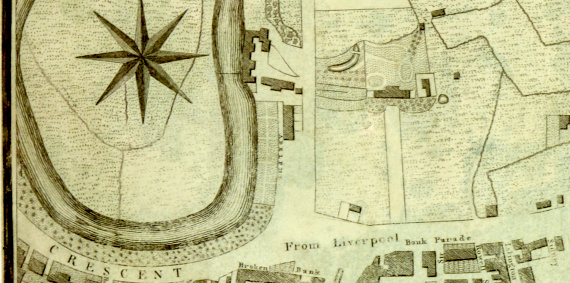
Bank Mill and House on the Irwell near Salford Crescent, still semi-rural in 1809
124 : Hart Hill near Manchester, seat of Jno. Simpson Esqr.
Another snipping from the unknown diary that furnished the Scrapbook with the last few images, this one is dated 1805. Hart Hill is now an area of Buile Hill Park, Salford, and not far from the site of number 122, Claremont House. John Simpson was tenant or proprietor of what may have been the second house on the site, depicted here, which was itself replaced by new owner James Dugdale to a design of 1859 by architect Walter Scott. The land was acquired by Salford Corporation for housing and then to extend the public park, and Dugdale’s mansion demolished in 1926. We’re inebted to the excellent page on Hart Hill on the Eccles Old Road website; from its section on the houses at Hart Hill, it appears this may be the only image of the eighteenth-century house. We’ll confer with the editors and see what they think.
123 : Heaton Hall, seat of Ld. Wilton near Manchester
Another of the attractive but tiny images from an unidentified 1804 diary, this one rather torn. Heaton Hall, now at the centre of the Manchester area’s largest park. Lord Wilton, or to give him his full name and titles at this date, Thomas Grey Egerton, 1st Earl of Wilton (1749 –1814) was, like John Ford, a Colonel of a volunteer regiment, and by 1803 had raised the Heaton Volunteer Artillery. These were semi-private home-service only units, intended to free up more regular formations for overseas service. The Hall itself was rebuilt by Thomas Egerton to designs by architect James Wyatt (1746–1813), then among the best known in England for his neo-classical and (later) neo-Gothic style.
122 : Claremont near Manchester, seat of Col. Ford
By the time this image of Claremont House was used for the diary in 1804, Colonel John Ford, descendant of a Staffordshire family, had disbanded his Manchester and Salford Volunteer Light Horse in 1802 during the brief peace with France (its colours being deposited at his house), and gone on to become Lt.Col of a Cheshire volunteer regiment in 1803. He had Claremont House built as his country residence, and had a house in King Street Manchester. He had studied at Manchester Grammar School, then next door to Chetham’s, an institution of which he later became a feoffee (governor of the charity). He died near Sandbach, Cheshire in 1839. As with the rest of the diary illustrations surviving in the Scrapbook, the pictures are evidently intended to draw the mind of the user towards the grandeur in which such men lived, perhaps to encourage aspiration and achievement. We’re grateful to MMU’s Tom McGrath (Twitter @TomMcGrath_) for the following information on where Claremont House was, and what’s now occupying its former space. The Heywoods are, of course, another and a very important Manchester story:
‘Claremont was located in Pendleton, not too far from Buile Hill. After the death of Mrs Ford in 1825 it was occupied by Benjamin Heywood & the Heywoods stayed there until it was demolished in 1924. Buckland Road now covers the site of the hall.’ If you’re finding this page interesting, don’t miss Tom’s fascinating site at www.ifthosewallscouldtalk.wordpress.com. Thanks, too, to Instagram user Redminimadness, who adds: ‘Claremont House was in Salford just off Eccles Old Road. Nearby were Hope Hall, Hart Hill Buile Hill Hall which were residences of other notable people from Manchester and Salford. The only building that still exists from the estate is Claremont Lodge.’ Both your contributions much appreciated.
121 : Trafford Hall
The next few images of some of the Manchester area’s grand houses come, according to the dismal typescript index to the Scrapbook, ‘from a diary’, and indeed they each provide the image for a month in 1804. It would be interesting, but no doubt pretty hard, to find a complete copy. It seems likely to have been a small publication, as each of these images is only about six by three-and-a-half centimetres. The first is this view of Trafford Hall, a grand house eventually surrounded by the burgeoning industrial development of its own park, ‘Trafford Park’ probably meaning gentile grandeur and deer to the artist responsible here, and gigantic manufacturing facilities by the time the hall itself was demolished in 1939. The park in former days was the subject of one of the James series of engravings, with Mrs Pettiward (nee Jane Seymour Colman) sister-in-law and co-heiress of Sir Thomas Joseph de Trafford (1778-1852) as guest artist for the original drawing. We have seen this already in the Scrapbook at number 76.
120 : Mess. Clowes’s House at Huntsbank
The last of the border images from the Casson and Berry plan in the Scrapbook, Messrs. Clowes’ house is perhaps the most magnificent of those portrayed, or at least seems set in the largest plot, with eagles on the gates, paired front doors and impressive wings. Huntsbank, or Hunts Bank, is a name that has shifted meaning over time, now being used to refer to the slope upward towards Victoria Station, a slope built up artificially by the construction of the railway. On the plan, it refers to a street running roughly where Victoria Street now sits on its 19th-century artificial river bank, north away from the west door of the Collegiate Church to the small bridge over the Irk. The plan does not mark the house either in its indexing system, nor on the mapping. It is now hard to imagine where it could have stood, later plans and maps giving little help. The Clowes name is associated with many prominent Mancunians, fellows of the Collegiate Church, landowners, and as we saw in number 77, owners of Broughton Hall.
119 : Mr Touchet’s House in Deansgate
The penultimate in the Scrapbook’s series of cuttings from the border of the 1740s Casson and Berry Plan of Manchester and Salford. The Touchet house, looking perhaps as if it might owe a little to what the age called a warehouse as well as a large residence, was the abode of Thomas Touchet, a pinmaker from Warrington, who, like Humphrey Chetham before him, dealt in fustians and also in cotton cloth. He died leaving a fortune in 1744. The house is remembered again by Harrison Ainsworth in his nostalgic tour of the Manchester of his early memory in the preface to The Good Old Times (1873), recalling how the views in the plan helped him write: ‘Views are given in this plan of the principal houses then recently erected, and as these houses were occupied by Prince Charles and the Highland chiefs during their stay in Manchester, I could conduct the rebel leaders to their quarters without difficulty. One of the houses, situate in Deansgate, belonged to my mother’s uncle, Mr Touchet.’
Like the quay (number 114) before it, the image of St Ann’s Square in the border of the Casson and Berry plan is one of a few that are not solely of the private house of a wealthy resident. The decorative items in the border of the plan also surround the text that acts as a description, if not an advertisement, for the growing town, and there is clear pride – perhaps low church partisanship? – in St Ann’s: ‘A new Parish has been erected & a large Sumptuous Church therein built, call’d St Ann’s …’ As will be seen from the detail below, St Ann’s square perhaps looks closer to unchanged than almost any other feature of the 1740s mapping. It will also be seen that the ‘Dissenters Meeting House’, known to us now as Cross St Chapel, is very close at hand. A clue to this closeness and the name of the church is that Lady Ann Mosley, who had hitherto lent her support (in defiance of her thuggish husband) to the newly tolerated dissenting chapel on what is now Cross Street, returned to the Anglican communion, but as a member of the “low church party”, puritan in outlook, opposed to ritual, Hanoverian in politics. The only church in Manchester, the Collegiate Church of the single large parish, was distinctly High Church and leant towards the Jacobite cause. Ann’s new parish and Church of St. Ann’s was consecrated in 1712, only three years before the 1715 Jacobite rising and at a time of high tension within the Church of England and Britain as a whole. There is a good article on the history of the Cross St Chapel by Geoffrey Head that tells a fuller tale. The manuscript diary of Henry Newcome, the dissenting minister who can be regarded as the founder of the Chapel, is among the diaries at Chetham’s Library.
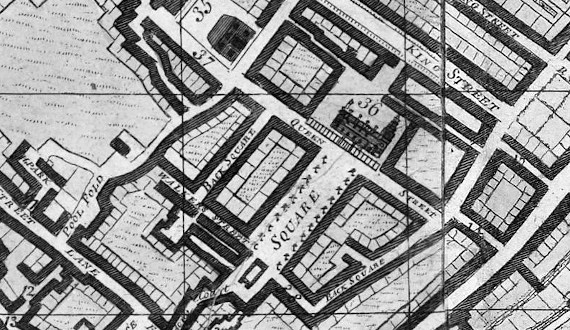
Detail of St Ann’s Square from the Casson & Berry plan, the church itself at 36, close by ‘Meeting House Walk’ (37) and the ‘Dissenters Meeting House’ (35).
117 : Mr Croxton’s House in King Street
The Casson and Berry plan border continues its tour of prominent houses with Mr Croxton’s; in this case we do have another view of the same house seventy or so years later, in the shape of Ralston and Aglio’s view of the ‘Late Dr White’s House on King Street’ at number 99. In Ralston’s drawing we can see how the house stood well above the roadway, with a separate elevated pavement to its front, apparently public by the 1820s at least. James Croston, who published a reprint of the ‘Views’ in 1875, provides a narrative that again takes us back to the 1745 rising: ‘A view of the house in King-street is given in Casson and Berrey’s maps of the town in 1746, 1751, and 1755, and it is there named as Mr. Croxton’s. Mr. George Croxton was an opulent merchant of Manchester; in 1743 he purchased the estate of Birch Hall, in Rusholme, from Humphrey Birch, a grandson of the famous parliamentary commander Colonel Birch, a property he sold two years later to Mr. John Dickinson, of Market-street-lane, who in the same year lodged Charles Edward Stuart during his stay in Manchester.’
116 : Mr. Marsden’s House in Market Street Lane
Our walk round the border of Casson and Berry’s 1740s plan of Manchester and Salford brings us to another long-vanished grand eighteenth-century house. This house again makes its way, via the plan, into Ainsworth’s The Good Old Times, set in his fictionalised account of the 1745 Jacobite rising, and is described as ‘a fine house in Market Street Lane, occupied by Mr Marsden’ which Ainsworth has ‘allotted to the Marquis of Tullibardine and Lord Nairne.’ Again the Plan does not locate the house for us on Market Street, but the presence of Marsden’s Square just to the west of the High Street and connected by a short street to Market Street itself may be a clue. Despite its very characteristic appearance, size and splendour, its cupola and its distinction in being set back from the street, it appears nowhere in the Georgian views of Market Street that we reviewed below.
115 : Mr Hawarth’s House in Millgate
The border of the Casson and Berry plan of the 1740s again provides today’s image. Mr Hawarth’s house doesn’t figure on the plan itself, but Millgate, the remnants of which are now the discontinuous and pedestrianised Long Millgate (address of a Library you may have heard of) was a much larger thoroughfare, running past the East end of the Collegiate Church and swinging eastward to reflect the course of the River Irk as it debouched into the Irwell. The driving through of Corporation Street, and even more so the construction of the railways with their bridges, viaducts, embankments and buildings completely altered the lie of the land and the visibility of the Irk, and more or less obliterated the eighteenth-century appearance of the area. Even before the Irk was hidden below the Edwardian extension fo Victoria Station, Richard Procter’s Memorials of Manchester Streets (1874) quoted a Manchester Guardian article of ten years before: ‘To citizens familiar with the locality it scarcely need be told that, for most useful or ornamental purposes, this street – ruthlessly cut into many pieces – has been virtually dead several years, only requiring to be put decently out of sight.’ No house as grand as Mr Hawarth’s appears to have survived into the photographic era. The Hawarth (or on some spellings Haworth) family were (Procter again): ‘The last important family residing in Long Millgate’, their name being given to ‘Haworths’ Gates, a narrow passage which was stopped up by order of the City Council in September 1868′. The Hawarth who was flattered by this print of his residence would have been Abraham Haworth, who ‘died at his house in Milngate’ in 1759.
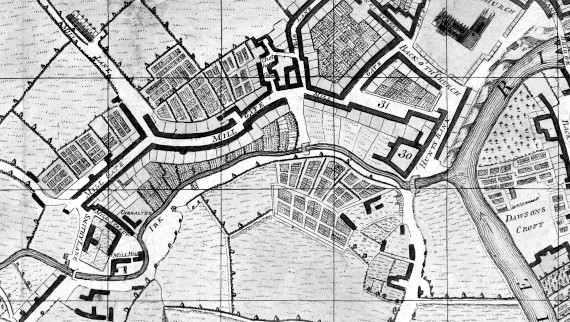
Millgate on the 1740s Casson and Berry plan. Chethams (30) and the Church are about the only structures remaining, and the Irk is now hard to find.
114 : The Key
‘The Key’ in the caption, or ‘The Kay’ in its place on the main portion of the Casson and Berry plan, lay at the foot of ‘Kay Street’, our own Quay Street, and as the snippet from the plan below shows us, was several fields away down what was still effectively a country lane in the 1740s. Manchester would continue to develop its water-borne transport links in the shape of a complex system of canals and canalised river-ways, culminating in the Port of Manchester and the Ship Canal. But the quay was already seen as an important aspect of the commercial life of the town when this view was cut. The plan of Manchester offers a description of the towns of Manchester and Salford as well as the main map and illustrations, and says of the Quay: ‘The River Irwell which Washes a great part of ye Town is now made Navigable & a handsom Key is created for unloading &c. … There is not any Town in the Nation excepting our Sea Ports that may be compar’d to it in Trade, as appears from the number of Packs or Goods which go weekly out of the Town.’
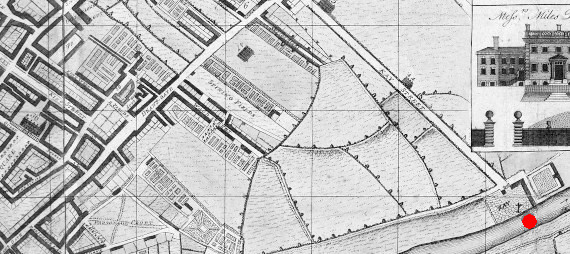
‘The Kay’ on the Casson and Berry plan: the mid C18 town with its nascent port at some distance from the built up area down ‘Kay Street’
113 : Mr Dickenson’s House at top of Market-Street-Lane
The border of the Casson and Berry plan again provides our next scrapbook paste-in. As with yesterday’s view of Mr Johnson’s house, Mr Dickenson’s played a part in the Jacobite rising – in fact, the starring role of any building associated with Manchester’s most exciting year for a long time. As the Victoria County History tells us: ‘The whole force reached Manchester the following day, the prince himself riding in during the afternoon, when his father was proclaimed king as James III. Mr. Dickinson’s house in Market Street was chosen as head quarters and was afterwards known as ‘The Palace.’ At night many of the people illuminated their houses, bonfires were made, and the bells were rung. Some three hundred recruits had joined the invaders, and were called ‘The Manchester Regiment.” Its time as ‘The Palace’ was brief; and following defeat at Carlisle and Culloden, brutal justice had a brutal monument in the shapes of Jacobite heads on the Manchester Exchange. Like all the private buildings in the border, it was long gone by the time Harrison Ainsworth wrote his preface to The Good Old Times in 1873: ‘… gone, as is Mr Dickenson’s fine house in Market Street Lane, where the prince was lodged. Indeed, there is scarcely a house left in the town that has the slightest historical association belonging to it.’
112 : Mr Johnson’s House
Our walk round the border decoration of Russel Casson and John Berry’s 1740s Plan of Manchester and Salford continues with another imposing gentry house. When we looked at number 108, another map-border image, we mentioned best selling Manchester Novelist William Harrison Ainsworth (1805-1882) and his romantic account of the 1745 Jacobite rising, The Good Old Times, and speculated about his using the near-contemporary plan for his narrative. A bit more reading this week in his preface makes it quite clear that he did exactly that: ‘When I was a boy some elderly personages with whom I was acquainted were kind enough to describe to me events connected with Prince Charles’s visit to Manchester … little of the old town, however is now left.’ In imagining the scene that greeted Bonnie Prince Charlie he ‘was saved from the possibility of error by an excellent plan, almost of the precise date, by John A. Berry, to which I made constant reference during my task. Views are given in this plan of the principal houses then recently erected, and as these houses were occupied by Prince Charles and the Highland chiefs during their stay in Manchester, I could conduct the rebel leaders to their quarters without difficulty.’ Ainsworth has Prince Charlie tell Lord Derwentwater to introduce him to another character as ‘Mr Johnson’ as an incognito – are we looking at the inspiration here?
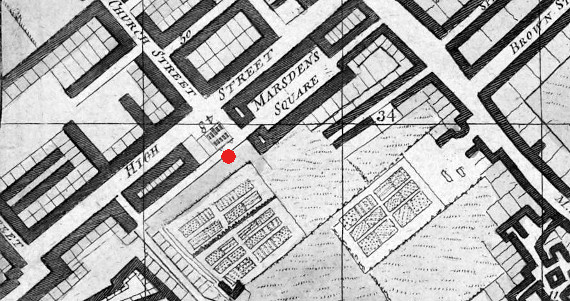
Johnson’s house on High Street opposite Church Street in a detail from the Casson and Berry plan, with an inverted ’48’ above it referring to the plan’s key
111 : Francis Reynolds Esqr. – Strangeways Hall
As we continue round the border of the 1740s Casson and Berry map, we cross the bridge over the Irk on the northern edge of eighteenth-century Manchester to arrive at Strangeways Hall. The Hall and its lands are said to have acquired their name through the Strangeways / de Strangeways family; given ‘de’ titles are usually indicative of people who acquired their name by being from a particular place, this argument may be a little circular. The hall was sited not far from the prison now known as HMP Manchester, renamed in some haste after a particularly egregious riot. The site is now completely unrecognisable, and major buildings have come and gone since the disappearance of the hall in 1858, when its final owner sold building, furnishings and site for demolition and clearance. The image here is perhaps the best known, reproduced and thus more widely seen in the form of a direct copy for Procter’s Memorials of Manchester Streets later in the nineteenth century. Francis Reynolds (d. 1773), was the owner at the time over which the various states and editions of the map were issued, was an MP for Lancaster (Manchester itself, of course, having none), and faced down a couple of challenges to his inheritance of the estate. There’s a good blog post about the Hall and its families of owners.
110 : Mr Marriotts House in Browns Street
Another splendid house found depicted in the border of the Casson and Berry maps, this mansion was due to Joshua Marriott (b. 1719), a successful threadmaker who also became involved in finance. Below is an attempt to show (immediately above the red dot) what seems certain to have been the site of this house, set back from the rest of the buildings lining the street. The map uses bold black lines to indicate built-up sections of street. Marriott seems to have been a worshipper at St Ann’s Church, and an anti-Jacobite. There is an interesing attempt to GeoTag the exact location of the house on Flickr, and there is also a very interesting blog post about this house, the Marriotts and associated events and places.

A detail from the Casson & Berry map showing the likely location of Marriott’s house
109 : Messrs. Miles Bower and Son Houses
Miles Bower and son are recorded, among a long list of other names, as putting up a ‘loyal contribution’ to provide for forces to resist the advancing Jacobite army in 1745, in their case a relatively modest £20. Being on the winning Hanoverian side can have done them no harm at the date of the Casson and Berry maps, and certainly their house, on Deansgate, verges on the palatial. The family made their money in the felt hat trade, and Miles Bower junior and senior brought the business to the kind of success their mansion-like house depicts. Miles Bower senior died in 1780, at the age of 85; he and his son served on the court leet of Manchester and the firm features in Mrs Raffald’s Directory of Manchester – the first – in 1772. The hat works passed out of the hands of the Bowers, but was still making hats in 1849.
108 : Floyd’s House
Today’s image leaves the sophisticated work of Ralston and Aglio behind and moves on to what are effectively cuttings from the celebrated maps of Manchester made for and by Russel Casson and John Berry, A Plan of the Towns of Manchester and Salford in the County Palatine of Lancaster between 1741 and 1757. The Library has several copies of this map from different dates; the survey, such as it was, doesn’t change from issue to issue, though the borders, including these images of notable buildings, do change. Manchester’s most successful nineteenth-century novelist, William Harrison Ainsworth, brings this house into his novelisation of the 1745 rising, The Good Old Times, as Bonnie Prince Charlie’s lieutenants search the town of Manchester for a suitable royal headquarters: ‘Mr Floyd’s house, near St Ann’s Square, was next visited; a handsome mansion, ornamented with pilasters, having a Belvidere on the summit, and approached by a noble flight of steps …’. They reject Floyd’s house, but as they continue round the town the names of the houses considered coincide exactly with the grander houses on the margins of the Casson and Berry map. As a frequent reader at Chetham’s, it may well even have been one of our copies of the map from which he picked names and descriptions. Ainsworth always took full advantage of the novelist’s freedom to create a pleasing narrative, so we need not necessarily see historical detail in his account. There’s a little more on this famous map in one of our ‘101 treasures’ posts, and we’ll consider it more in the next few days.
107 : Middle Market Street, Manchester
A final view of Market Street from the ‘Views’ series that we started to look at with its title page at number 98. We’ve come back down the hill a little, though there aren’t enough landmarks to say exactly where. Was the demolition on the right anything to do with the street-widening programme the Act commemorated put in train? Again, it’s credited ‘From Nature by Ralston, & on Stone by A. Aglio’, printed by Aglio, who this time gives his address, 36 Newman Street. As we’ve observed, these are local views but not local productions; the Newman Street concerned was off Oxford Street, London, not Manchester.
106 : Top of Market Street, Manchester
‘From Nature by Ralston, & on Stone by A. Aglio’, and printed again by Aglio himself. This is not, perhaps, what you and I might think of as the top of Market Street, Brown Street to the right here being little more than half way between Market Place and Piccadilly, downhill from Spring Gardens. It looks towards Piccadilly, but we can only guess at where High Street might cross, and we’re quite out of sight of things like the Infirmary pond. The scence fairly bustles, though, and you can get your ticket to London on the coach, buy luggage to take with you and stock up on snuff for the journey all without leaving the frame of the print.
105 : Mr Hyde’s Shop, Market Street
The winner of the most eccentric chimney stack from yesterday’s Market Street view receives a full-frame portrait in this print, Mr Hyde’s Shop. The building seems also to win most picturesque, giving every appearance of being seventeenth-century work with some very elaborate decorative framing. Irish butter, dairy and tea is the stock in trade. The artistic pairing of John Ralston drawing and Agostino Aglio as lithographer continues, but this time Aglio himself prints, and takes a rather cavalier approach to Ralston’s name – his rendering looks more like ‘Rolson’. The publishers, D. & P. Jackson, may not have been delighted to come out as Jakson, but Aglio’s talent in producing an attractive print probably balanced these minor infelicities. As Halloween has already passed, no remarks concerning Dr Jekyll are offered here. Losing a landmark establishment like this must have been one of the less attractive aspects of the Improvement Acts.
104 : Market Street
We’ve moved a little further up Market Street and up the slope that now has the Arndale on one side of it. From the bend in the street – modernisation straightened as well as widened it – we’re probably looking downhill from about the Spring Gardens level. The shop names are just about visible at full resolution of the scan, with a watchmakers, Clough’s ironmongers, and at the left edge of frame Sharp & Co, with a figure with a barrow just visible in the shade of the entry. Most prominent is Hyde’s Grocery and Tea at no. 88, with a chimney stack that would have given his insurers sleepless nights. It figures in a print of its own tomorrow. Ralston and Aglio again the artist and lithographer, Chater the printer.
103 : Market Street
We have come a little further up Market Street from yesterday’s view, and have turned about to look back towards the Exchange and Market Place. The rounded end of the Exchange peeps out to orient us – even though it’s long gone, it’s the most familiar feature from an otherwise unrecognisable scene. The publishers, Jackson’s, are the only names present in yesterday’s print in the same series. This view is another Ralston drawing, the lithography by Aglio, and the printer, N. Chater and Co. are a rather less well documented firm than Hullmandel’s. At a casual glance we might again mistake the Manchester of 1823 for York’s Stonegate or Petergate.
102 : Market Street, Manchester
Today’s image is the first of a series of views of Market Street that dominate the next few days of posts. The modern Mancunian is used to seeing Market Street as a wide thoroughfare, and the narrow nature of the space between buildings here leading away from Market Place demonstrated to the need for the very ‘Improvement’ that the views commemorate. Whether what we have now is a big improvement is perhaps open to discussion; but it’s wider beyond dispute. We met James Duffield Harding yesterday is the lithographer of John Ralston’s original drawing; for this view, he has the only credit, giving the impression he both drew and made the print. The printer, Charles Joseph Hullmandel (1789–1850), was a prominent London printmaker and it’s no surprise to find him responsible for the physical production of this prestige project.
101 : Market Place
As with yesterday’s view of the Blackfriars Bridge, we’ve already seen a lithograph of Market Place from a very similar angle in the James views series at number 64. This larger print from the ‘Manchester Streets’ series is again a litho from original drawing by John Ralston, this time redrawn on the stone not by Aglio but by the twenty-five-year-old James Duffield Harding (1798-1863), later an influential watercolourist, drawing master and oil painter. Again in keeping with the grander ideas of the series, Harding, like Ralston, Aglio and Mather Brown was not a local boy, but was born and died in the London area. The scene itself is again full of detail, with many more people than James populated his work with; unlike yesterday’s view, however, this scene looking across Market Place and the apsidal end of the Exchange to the right was still visible in May 1823. Ralston’s viewpoint must have been very close to the red dot on this detail from the 1824 Pigot map of Manchester and Salford.
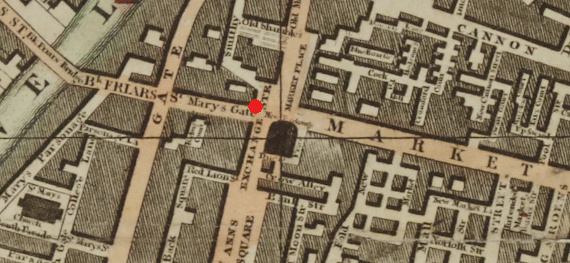
Detail of Market Place and the Exchange from the 1824 Pigot map
100 : Blackfriars Bridge
We have already looked at a very similar scene to that depicted in this image at numbers 19 and 70. Like the view of King Street in number 99 before the construction of the Town Hall, this view was also a memory by the print date of 1823, the new, stone-built and substantial Blackfriars Bridge having been opened in 1820 (see number 72) to provide the town with a second crossing capable of carrying vehicles. John Ralston is again the original artist, Agostino Aglio the lithographer, and they combine to produce a view from perhaps just a little further back than that by Barritt, and as full of detail as Barritt’s was of watercolour softness. The large lithos are hard to do justice to in a web image. Here is a small detail from the busy and industrious scene on the river to give an impression:

The contrast between the improved and the former, ‘unimproved’ state of the streets and infrastructure is ample to flatter the boroughreeve, constables and commissioners to whom the views were dedicated; the mayor and council who were to replace those officers twenty years later could no doubt look back on what their antecedents had achieved with some pride.
99 : Late Dr White’s House on King Street
After yesterday’s build-up with the cover page to the ‘Manchester Streets’ series, we have this busy scene at the end of a King Street that looks a great deal more like something we might imagine taking place in Bath rather than in Manchester. We’ve seen both the picturesque and the frankly slightly grotty in our views from the Scrapbook to date, but here the highly professional team of John Ralston (1789-1833) drawing and Agostino Aglio (1777-1857) making the lithograph gives us a busy scene, full of life, activity and detail in this 1823 retrospective view. The sheet measures 43×33 cm. in our copy, so there is a luxurious amount of space by comparison with some of the smaller items we’ve seen before. At the right of frame is the beginning of the street sign ‘Red Cross Street’, which was the name of the southern portion of Cross Street; we’re thus looking at where the ‘Old’ – Francis Goodwin’s – Town Hall stood from its beginnings in 1822 until after it was replaced in the ’60s and ’70s by the present gothic town hall on Albert Square. A much smaller and simpler view of this impressive house in the 1740s is above at number 117.
98 : Manchester Streets
With item 98, we turn away from F. Wroe’s contributions to meet up with some significant artists who produced a series of large and fine-quality prints that you may well have seen reproduced more than once in various places, dedicated: ‘To the Boroughreeve, Constables and the Commissioners acting under the Manchester Streets Improvement Act’. Today’s offering is a title-sheet for the series, in which various hands were involved; we’re also in the territory of the ‘Improvement Acts’, a gathering term for a range of parliamentary acts passed across the later eighteenth and the nineteenth centuries to give a variety of local bodies the powers they needed to pave towns and cities, supply them with street lighting, policing, etc. Manchester was the subject of several such acts before 1838, when it was formally incorporated and began to acquire a less ad-hoc machinery of local government. In 1823, when this sheet was printed, the parliamentary representation brought about by the 1832 reform act was still a decade away. The civic pride expressed here, though, goes to significant trouble to show itself anything but provincial. Massachusetts-born Mather Brown (1761-1831) painted the original for this sheet; just in case you hadn’t heard of him, he’s down as the ‘principal Artist to His R.H. the Duke of York’. Celebrated Cremona-born artist (later to do a full-length oil of the young Queen Victoria) Agostino Aglio (1777-1857) was the lithographer of this plate and many of the rest; John Ralston, whose name has been taken in vain rather so far in the Scrapbook with his work indifferently reproduced by others, will show us his paces in the next few plates as painter of the originals. A rather classical un-named allegorical matriarch holds the Gresley arms to represent Manchester tradition (Heraldry later incorporated into the City of Manchester arms), while brushes, easel, and unfurling artwork sit to her left. The whole is published in London, and sold at the ‘Repository of Arts, No 1 Spring Gardens, Manchester’. Ready to be impressed? We’ll see with tomorrow’s number 99.
97 : View of Manchester from Strawberry Hill
Today’s image is another F. Wroe redrawing of a print by James Parry (d. 1871). Wroe faithfully reproduces the original text of the print, ‘View of Manchester from Strawberry Hill, on the Bolton Canal, Salford, drawn & engraved by Jas. Parry & pub’d by J. Rogerson, Market Street 1818.’ Despite the signs of burgeoning industry in the shape of factory chimneys, Parry represents Manchester as still dominated by its church spires, St Michael’s on the left, the Collegiate Church, St Anne’s (still with its taller tower), St Mary’s and St. John’s following on. We are even provided with a lady and a gentleman in frock coat for foreground interest, and a labourer on the left who evidently knows his place is in the margin. It’s comforting that Salford is still known around the world for the quality of its wild strawberries.
96 : The Collegiate Church
F. Wroe – probably in the 1880s, judging by his dated work in the Scrapbook – tackling another redrawing of the work of other artists, in this case: ‘The Collegiate Church, Manchester, 1829. Enlarged from a drawing by G. Pickering, Engraved by Edward Finden and published by Mess’ Longman and Co.’ There is a series of rather fine illustrations drawn by Pickering (d. 1857) and engraved by Finden (1791-1857) for the publication of the first series of Traditions of Lancashire by John Roby (1793-1850) (London: Longman, 1829) later in the Scrapbook. Pickering, a Yorkshireman who settled in Liverpool and Birkenhead, provided the art work for other illustrated works on Lancashire and Cheshire. It appears there was no spare copy of the view of the Collegiate Church to include in the Scrapbook, and once again Wroe has obliged. You can see an image of a nicely hand-shaded copy of the original print posted on Tumblr.
95 : Chetham’s Hospital, Manchester
‘Chetham’s Hospital, Manchester, in 1821, drawn and engraved by James Parry’, ‘Pen and ink by F. Wroe’, to reproduce all the text. Manchester-born James Parry (1795-1871) was, like his father Joseph and several other family members, an artist in oils and an engraver. His self portait and two other oils are at Salford Museum and Art Gallery. We’ll see more by him or based on his work, and that of his father and his elder brother David Henry Parry, later in the scrapbook. Wroe has redrawn the engraving, and after being rather sniffy about his artistic talents, we’d have to admit this rendering is better. We have a copy of the print on which this is based, and did a short blog post about it a while ago.
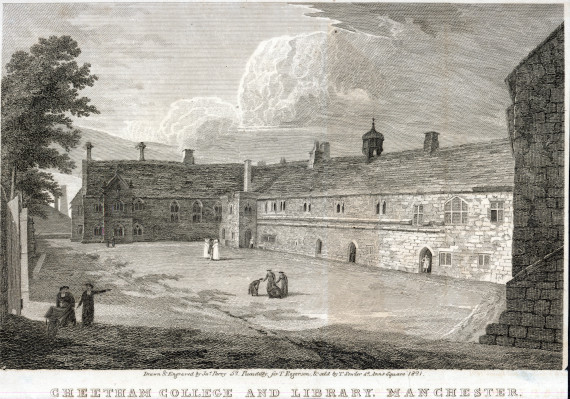
James Parry’s original 1821 print
The ‘Hospital’, as Chetham named his posthumous foundation of a free school for local poor boys, means the 1420s buildings in this case. The figures in black are the pupils of the school. The refounding of Manchester’s parish church as a collegiate foundation in 1421 is the notional date for the ancient buildings, 400 years old in 1821 and about to reach 600 next year. The buildings are also historically known as ‘College House’, a reference not to the school but to the priestly college who first occupied what is now the Library. There’s more about the history of the institution on our website, and read about all the many things going on in Chetham’s School of Music despite the current pandemic, too.
94 : ‘Gibraltar’, off Long Millgate, Manchester
As November is taking us into another lockdown, we’ll be continuing with our visits to Manchester’s former states in the pages of the Manchester Scrapbook. Today’s item is captioned ‘Gibraltar, off Long Millgate, Manchester. The two principal buildings bear the following initials and dates: – The Gabled house, WAW 1668. The house adjoining on the left, A.E. MDCLXXXVI.’ This is another of F. Wroe’s drawings, dated 1880, and again perhaps more remarkable for what it portrays rather than for Wroe’s artistic skills. Gibraltar seems to have been a byword for a particularly run-down slum. We have to mourn its demolition, but in its final state perhaps its tenants would have been less unhappy to see it go. It survived into the photographic era, althought the publishers of the half-tone of this photo do call it part of a scene of ‘squalour, and misery, and vice’. They also note that it ‘has for some time been removed.’
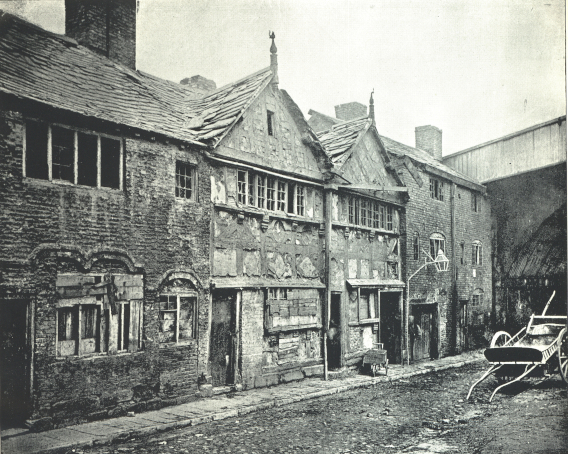
‘The Gibraltar’ prior to demolition, in a sad state.
93 : Salford Cross by William Bradley
A return to the H.G. James lithographic series of prints, but the first in our series not drawn by James, whose view of the same subject we have seen at number 73. This view of Salford Cross was drawn by celebrated Manchester-born artist William Bradley (1801-1857). Orphaned at three, he became a shop assistant and moved on at sixteen to set up as an artist. He moved to London in the early 1820s after acquiring the help of fellow artist Mather Brown, returning to Manchester in declining health in the ’40s. While in London he exhibited at the Royal Academy, and painted many luminaries including Gladstone. He is remembered as a portrait artist, and later in the Scrapbook we’ll see his rendering as a print of the painting in oils of Chetham’s Librarian Robert Thyer (d. 1781), and (presumably from life) the thuggish and almost certainly corrupt Constable of Manchester, Joseph Nadin (1765-1848), one of the anti-heroes of the Peterloo era. He will apparently have been nineteen when he drew this depiction of Salford Cross; does the degree of character in the face of he figure in the foreground show us the portrait painter to come? It certainly adds something over the number of stylised figures in most views.
92 : Buildings near the old bridge, now taken down
The inspirational pull of tumbledown riverside buildings ‘taken down’ has alreadly brought in H.G. James in our Scrapbook at number 55. Here John Ralston pictures a rather similar group of buildings next to the celebrated ‘Old Bridge’ over the Irwell, in 1821. His vantage point on the Salford side must have matched that of the pair of figures (mother and child?) on the far bank, still mud and sandstone as the canalisation of the this stretch of the Irwell is still well into the future. The sense of something worth recording that is about to vanish seems to have driven both James and Ralston, who must have known that the appetite for their prints existed among the Georgian Mancunian population. Decay and the picturesque move away here from Tuscan temples to the new shock city as artistic themes; but the new industry and its architecture don’t seem to exercise the same draw.
91 : Garratt Hall
The H.G. James lithograph of Garratt Hall (or Garrat, or Garret) has already figured in our journey through the Scrapbook at number 48. This time the depiction is by the ‘real’ John Ralston (1789-1833), a break in the pattern of F. Wroe sketches after Ralston that we have been seeing in the last few posts. It becomes immediately apparent that Ralston was a professional artist, and our Wroe content does suffer by comparison. Garratt Hall survived into the Georgian age, a picturesque sight down by the Medlock and Granby Row. The map snippet below shows the location in general, with namesake Garrat Mill occupying the attentions of the 1800 map draughtsmen. The Garratt pub also helps the long-vanished hall keep a place in the memories of Mancunians.
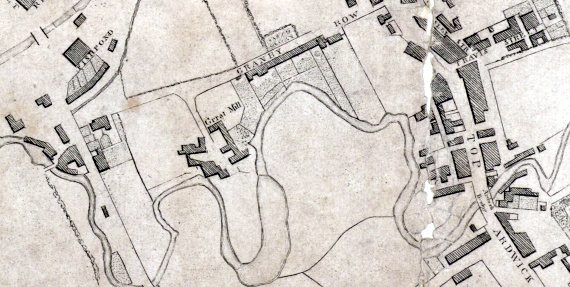
90 : Prince’s Tavern
‘The Birth-place of Thomas De Quincey, Corner of John Dalton St & Cross St, Manchester’, signed by F. Wroe and dated 1883. Someone has helpfully labelled the foreground street with the rather awkward little figures for us as John Dalton St, Cross St running towards us out of top of frame on the right. It’s perhaps not unexpected that a man we now remember, maybe a little unfairly, as an opium addict was born in a pub. De Quincey (1785-1859) was born in Manchester, was taken off very young to Bath, and sent back to Manchester Grammar School to prepare him for university. He ran away from the school after less than two years and, avoiding his apparently overwhelming family, lived a difficult time in his teens. He went to Worcester College, Oxford, where his interest in opium developed to the extent that he failed to attend a critical oral exam at the end of his course and thus did not graduate. We must be grateful that young people no longer see university as a place to experiment with drugs and ignore their coursework. Espousing reactionary views in his journalistic career on running out of money in the Lake District, he frowned on the radicals who were caught up in the Peterloo Massacre, and opposed franchise extension and Catholic emancipation. The right wing seem not to have rewarded his support, and his constant endebtedness led him to hide in the sanctuary of Holyrood Park, Edinburgh, to avoid arrest for debt. His longest recorded spell away from opium seems to have been only two months. He died and was buried in Edinburgh; a son Manchester isn’t quite sure about?
89 : Lower End of Market Street
With number 89, we’re back from our foray into the 300s of yesterday, made for #MuseumPassion. Another F. Wroe copy of a sketch by John Ralston, which he has called ‘Lower End of Market Street, Copied from a drawing of J. Ralston by F. Wroe.’ The date, 30 October 1822, is the date of the Ralston original. Hayes the Hatter stands out clearly enough, but who’s climbed over that wall? Also, is it me, or is F. Wroe’s work here a little better than some of his previous efforts?
339 : Ganter’s Universal Museum
We know you expect some pretty crazy stuff when you visit a website for a rare books library, but from 88 to 339? Have we taken leave, etc? It’s just that today (15 Oct 2020 if you’re visiting from posterity) is #MuseumPassion day, and so we’ve leapt ahead to meet Ganter’s Universal Museum. Of course you and I have heard all about it, but not everyone is so lucky – Google, for example, is a bit shamefaced: ‘It looks like there aren’t any great matches for your search.’ Do click through the image above to take it all in. Who would want to miss any of it? ‘The Nabob in Triumph’; ‘The Wonderful Automaton Flageolet Player, which performs several pieces of music, moving its fingers, eyes &c’; ‘A Beautiful Piece of Machinery, representing a Crocodile and Dragon, one crawling from, the other flying above, the cave’; ‘The Corsican Tyrant and his late Consort’ modelled in rice paste (what else?); ‘different kinds of long War Clubs, used in the Friendly Islands’ (how friendly are they again?). No wonder it took the Proprietor ‘nearly 20 years’ to put this together. Apropos of one of our earlier tweets today on local resident Sir Ashton Lever of Alkrington Hall, Ganter ‘has also received an extensive collection of some of the rarest Curiosities, which he purchased at the sale of the Leverian Museum.’ Modestly priced – get in for sixpence if you don’t mind saying you’re a servant, or a shilling if you insist on being a lady or gentleman – or for half a crown you can get a season ticket.
88 : Thatched House Tavern
Perhaps one of F. Wroe’s more successful re-drawings of originals – or is it just because there are no people in it? The original is unattributed: ‘The Old Thatched House Tavern, Market Street Lane, Manchester, in 1805. From a sketch in the possession of John Leigh Esq, Officer of Health, Manchester, to whose father the property belonged. The house was taken down about 1823.’ We’ve already seen one of his reproductions of a Ralston sketch of the Old Thatched House, but this more satisfactory angle perhaps played better to Wroe’s limited drawing skills. As a bad photo of something interesting is generally more use to us than a good photo of something mundane, though, this gives us another reason to thank Wroe for showing us again how the Manchester of the Peterloo era could look much like the Manchester of Humphrey Chetham’s times two hundred years earlier.
87 : Old House, Deansgate
Or to give it its title and tale in full: ‘Old house at the junction of Deansgate & Cateaton St, once the residence of Sir Geo. de Collyar, the Ninth Warden of Manchester. It was taken down about 1832. From a Wood-cut by Jno. Fothergill in “The British Volunteer”, 1824-5’. With apologies to vegans, don’t you wish Tate’s Cumberland Bacon, Ham and Kendal Butter Warehouse was still with us? We do have copies of the British Volunteer, and will try to add an image of the Fothergill woodcut later. It looks as if Wroe had to go back to his sources to supply the ordinal for Sir George de Collyar, ‘the Ninth’ being in a different ink. George Collier, as our age knows him, took his M.A. at Oxford in 1510, was rector of Wickwar, Gloucestershire, before 1535, and was warden when the Collegiate Church of Manchester (now the Cathedral) was dissolved by Edward VI in 1547. He remained a Catholic, retired to Staffordshire during the reign of Edward VI, came back to Manchester under Mary, and died there. In August 1556, before the formal restoration of the college of priests under Mary, he described himself as warden in granting probate of a will at Manchester.
86 : The Rovers Return
As the Angel Meadow ‘Meadow Angels’ remarked in referring to the 1911 demolition of the ancient Seven Stars Inn, later atrocities in terms of demolition followed thick and fast, and a good example is the ancient ‘Rover’s Return’, arguably older still, and pictured here in an original F. Wroe sketch of 1880. This survived the Manchester Blitz, only to be knocked down in 1958. Wouldn’t it be nice if Shudehill still had this lovely old place? – and perhaps Knott’s the poulterer would be doing good business too. The interesting ‘Pubs of Manchester’ blog has further good pictures and some more history of this venerable institution.
85 : Lower End of Market Street
After the last couple of F. Wroe re-drawings of sketches, perhaps we’re getting used to his slightly primary-school style? Perhaps it’s outsider art. He stood outside and drew it. This work is also based on the 1822 work of John Ralston, and takes us to the much-depicted Market Street. We should be grateful to Wroe for at least giving us the shape of this long-vanished version of Market Street, showing us another curious little tunnel-like access, this time to Cross Street, and accept that the past is a different country, even if people sometimes draw things indifferently there.
84 : Lower End of King Street, Manchester
Another reprise by F. Wroe after a John Ralston sketch dated 1822, this image again doesn’t do much to convince us of Wroe’s skill levels as an artist. As with yesterday’s post on the Thatched House, however, he does give us a historical note of interest: ‘Lower End of King St, Manchester. Until after the Improvement Act of 1821, King Street terminated at a a Carrier’s Warehouse in Police Street, formerly called Cotton Street, and the communication with Deansgate was by a narrow passage called Hatter’s Lane.’
83 : Old Thatched House Tavern
The full title of this sketch (by F. Wroe again after Ralston rather than James this time) is The Old Thatched House Tavern off Market Street, Manchester. As one of a few principal streets in the Georgian town of Manchester, aspects of Market Street come up again and again in the Scrapbook. So does the name of John Ralston (1789-1833), to whom several sketches in the scrapbook are tentatively attributed, while many more served as the source for prints and lithographs by Aglio and Wroe. We have to be grateful to F. Wroe (we can’t discover what ‘F’ stands for) because of his work filling up what would othewise be gaps in the scrapbook’s coverage, but it is probably safe to assume he was not a professional artist. He was honest enough to attribute his source, and interested enough to copy out the pub ditty for the Thatched House:
Ye farmer ‘neath thatch keeps his stacks fro’ the raine,
For elsewise would perish his hay and his graine;
But here we see men (what a contrary set),
Come under the thatch when they want to get wet.
82 : Seven Stars Inn
The Seven Stars was a significant landmark in the town, and one which served beer. Beer has always worked well in Manchester in terms of becoming celebrated, a landmark, or a place anyone feels affection for. Whether it was really licensed in 1350 is another issue, but it was certainly very old, and attracted the illustrator as well as the thirsty. There’s a good little article on it on ManchesterHistory.net, including a detail from one of our largest scale maps. Below are a couple more representations from the Library’s collection. Sadly, like the late lamented Tommy Ducks, all this venerability and interest didn’t stop morons from knocking it down in 1911.

The Seven Stars fom the Manchester Sketchbook
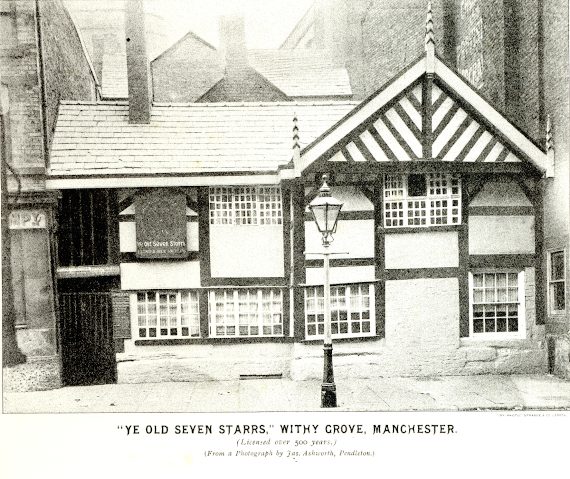
The seven stars in the late nineteenth century
81 : Cottages at Broughton Spout
Broughton Spout seems to have been regarded as a model of the picturesque. There is a pretty watercolour of it in Newport Gallery by water-colourist James Bourne (1775-1863), and an engraving by the now very familiar H.G. James; this image is an interpretation of James’ engraving by F. Wroe, whose work can be found in several other places in the scrapbook. He evidently felt he was making up a deficiency: ‘The only one of James’s views you have not got’; it has to be said that James’ lithograph is significantly better. The Spout was celebrated as the scene of William Crabtree’s ground-breaking observation of the transit of Venus in November 1639.
80x : Bull’s Head
Here we leave the James lithographs behind for a while. Why number eighty could not have been number seventy nine, and this number eighty, is now a decision too venerable to challenge. The Bull’s Head, however explains itself very literally and represented an inn that was something of a landmark in the town, central to the early postal service, and used very frequently for important public meetings of all kinds in the Georgian age, including the social and the political. Here is one of the (perhaps) less controversial, advertised in a unique surviving copy of a poster pasted into the Library’s ‘Cambrics’ scrapbook. Protection against gatecrashers seems to have been needed: ‘No Person may be ADMITTED to DINNER without a TICKET’!
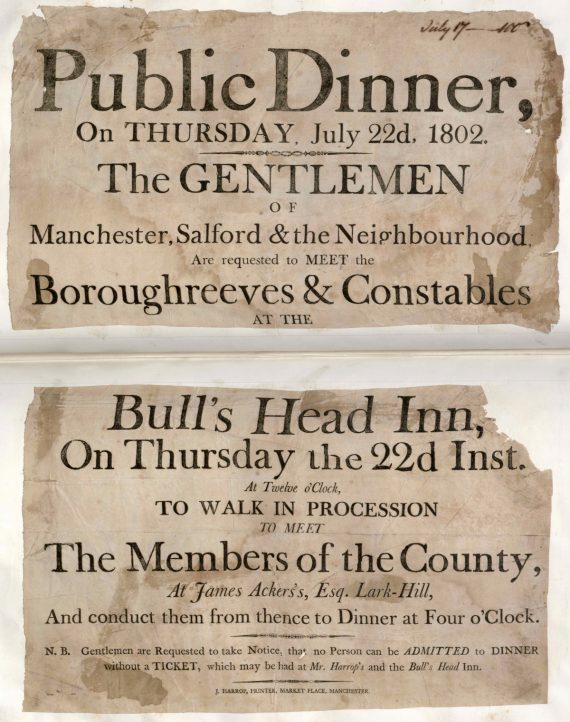
80 : Market Street
The maths wizards among you may be struck by an apparent anomaly here, and be asking the question ‘what happened to number 79?’ This excellent question has no answer unless you want to imagine an error of some kind in the numbering of the scrapbook items. Since Library staff are incapable of error, this throws the mistake back onto the Duke of Bridgewater, and we’re sure no-one will wish to impute mathematical incompetence to a peer of the realm, however long gone. To return to the picture itself, we’re continuing our voyage around the Georgian Manchester of the early 1820s, and looking down a Market Street that seems none the worse for the absence of the Arndale. As they prefer to do, H.G. James’s litho picks the most picturesque timber-framed house for its foreground, allowing the more symmetrical and by now more typical Georgian housing and shop-fronts to form the backdrop to the noticeably narrow street. Is the shabbily dressed figure in the middle of the road with his sheaves of paper a ballad seller?
78 : Smithy Door
After our excursion into the countryside for the halls of the great and landed, the James lithographic series brings us back to the picturesque and the tumbledown of the Georgian town with this view of Smithy Door. This corner of Manchester, with its theme-park levels of quaintness, had already drawn the attention of H.G. James at number 50, and this narrow, alley like view with the still un-rebuilt tower of the Collegiate Church presiding in the background seems an image to illustrate the urban-dweller’s ideal of a county market town rather than the Manchester of the Duke of Bridgewater’s canal and the burgeoning number of fully coal-fired, steam driven mills that were increasingly the reality of the date. The political struggles of Peterloo, only a couple of years previous to the date of this image, seem a world away.
77 : Broughton Hall
We’ve already seen a view of Broughton Old Hall, residence of Rev. John Clowes (1743-1831), by Ralston at number 31. Clowes inherited the park and hall via marriage connections with the Chetham family, and was the doyen when both this picture and the Ralston were done. He allowed housing development in the park, restricting the new housing by its size and price to ‘gentry’ level, and while other parts of the former park are now higher density housing, some remains as one of Salford’s public parks, known both as Clowes Park and as Broughton Park. Incumbent of St John’s church, John Street, Manchester, he was a prolific theological writer, a follower of the teachings of Swedenborg (though he remained an Anglican) and a nationally important orchid grower.
76 : West view of Trafford Park
The modern visitor to Trafford Park might see a slightly more limited number of deer. Trafford Hall here survived until 1939, its surroundings being gradually taken over by the Ship Canal and the associated developments that eventually made the name Trafford Park synonymous with Ford Motors. The lithograph is part of the James series (which also included a south view of the Hall), but the artist is Mrs Pettiward, who drew the scene ‘from nature’ for the litho. Mrs Pettiward was Jane Seymour Colman before her first marriage, which made her sister-in-law and co-heiress of Sir Thomas Joseph de Trafford (1778-1852) and it was no doubt thought best to let her take on this work! Her artistic legacy continued after her death, one of her portraits being exhibited in the Royal Academy Summer Exhibition in 1910. There’s another view of Trafford Hall at number 121.
75 : Prestwich Rectory
Prestwich had a church as far back as 1200, if not before, and was the old centre of the sprawling parish of Prestwich-cum-Oldham; the present tower is from ca. 1500, and the whole is grade one listed. It was the mother church for a series of chapelries for the scattered parish population, and what’s now Oldham Parish Church was merely one of its satellites. It’s the timber-framed rectory, rather than the church, that has caught the interest of the James lithographic series here, and with their never-failing eye for the picturesque they have made the scene seem centuries old. Another lost building that may have seemed convenient to replace, but which Prestwich church must surely miss.
74 : Turton Tower
After a nasty internet outage last week, we’re back with the Manchester Scrapbook and the continuing to make our way through the Georgian lithograph series of H.G. James and the James Lithographic Press. This image of Turton Tower also takes us close to Chetham’s again, as Turton Tower is a former home of Humphrey Chetham. Turton is well worth visiting, though like us they are not able to reopen just yet. A further coincidental connection is that the oldest parts of the pele tower that formed the first element of the present Jacobethan mansion seem to have gone up in the 1420s, like the buildings that now form Chetham’s. Turton was one of those communities to whose parish church Chetham furnished a chained library, and its oak case can still be seen there.
73 : Salford Cross
As if guided in that direction by so many of last week’s bridge pictures, we now pass over into Salford and come to this view of Salford Cross. Our copy of this print, a little time-worn by generations leafing through the scrapbook, makes all look rather dark, but the quaintness of the scene and features like the thatched roof to the left of the print bring it within the nostalgic ambit of the James lithos. The surroundings have been changed out of all recognition by the railway viaducts, bridges and embankments necessary to get the tracks across the Irwell and into Manchester Victoria, but the site of the cross on Greengate will have been quite close to the recently erected decorative tower at the north-west end of Victoria Bridge, now under the shadow of the remnants of Exchange Station and the new tower blocks. This scene, and the view to the east back across the river to the Collegiate Church on the higher bank, were depicted by various artists including the talented John Ralston. John Wesley preached at the foot of the cross in 1747, to a less than receptive crowd. James’ press also published a view of the Salford Cross by Bradley, at number 93 in the Scrapbook.
72 : Blackfriars Bridge
This week has been a bit bridge-heavy, with successive plates from the James lithographic series of Manchester monuments taking us from one bank of the Irwell to the other. Perhaps they decided to polish them off in a week themselves? This is the ‘new’ Blackfriars Bridge, replacing the terrifyingly insubstantial-looking footbridge we’ve seen depicted in number 19 and number 70. The stone bridge here was brand new when depicted in the lithograph, and had opened in August 1820. There’s a very good Wikipedia article on the subject. The structure was a major investment for the town and the constructors, but its providing a second vehicle crossing of the river must have been a major step forward in communications.
71 : Old Church and Bridge
Like number 70, this view is acknowledged as taken ‘From a drawing in the possession of Thomas Hardman Esqr.’, and the copying from either number 20 or another identical original is exact down to the positioning of the figures on the rocky banks of the Irwell. It seems odd, again, that the owner or ‘possessor’ of the original gets an honourable mention, but Barritt himself does not merit a credit.
70 : Old Blackfriars Bridge
For those who have been following this page or its various Twitter / Instagram alter-egos, there will be something more than passingly familiar about this view of the old Blackfriars footbridge, one of only two dry-shod routes across the Irwell. The now familiar James taste for the rickety is there, and the signature of H.G. James and the Lithographic Press remain the same, but this is the first time we have an attribution to an original from which James has drawn his lithograph. ‘From a drawing in the possession of Thomas Hardman Esqr.’ must point either to the same watercolour by Thomas Barritt that we’ve exhibited here as number 19 or one just like it. Why don’t we see him mentioned by name? If there were any attempt to conceal that this image is effectively a copy, not mentioning the fact at all would have been safer.
69 : Old Buildings taken down where the Exchange is now erected
In this scene the James engravings take us with definite intent into the reconstruction of the town of memory. We have already seen a part of the contemporary Exchange obtruding into the timbered past in number 63, and we’ll have another, wider view of its rounded end in number 101. But the really interesting comparison here is with number 16, Thomas Barritt’s 1819 view that he entitled ‘Old buildings took down to make way for the Exchange and Exchange Street Manchester’. While James is incomparably the better artist, surely what we’re seeing here owes more than a passing debt to Barritt?
68 : Ordsall Hall
Our friends and neighbours at Ordsall Hall, pictured here in the 1820s series of James engravings of the picturesque or the ancient in the Georgian town and environs. Ordsall has had its hard times and good, and Salford City have done great work getting it back into shape and making it interesting for all sorts of visitors. Chetham’s Library stalwart and prolific novelist William Harrison Ainsworth set his book Guy Fawkes in the Manchester area, and has Fawkes himself cook up the gunpowder plot in Ordsall’s ‘Star Chamber’; he also rather improbably casts a young Humphrey Chetham as a Jacobite sympathiser and brings him and Fawkes together in what is now the Reading Room at Chetham’s, with Dr John Dee thrown in for good measure. Steady on, William!
67 : Old Buildings Long Millgate
Now much truncated by the building of the Edwardian extensions to Victoria Station, pedestrianised and partly landscaped, and eclipsed by the driving through of Corporation Street, Long Millgate doesn’t really have the feel of a thoroughfare now. It was significantly busier in the 1820s, but also already something of a byword for the antique. By the time of the visits of Marx and Engels to the nearby Chetham’s Library in 1845, it was at the centre of what Engels was to call the ‘worst slums’ in a town with some truly appalling living conditions for those fleeing rural starvation for its urban equivalent. In this image the decay does perhaps soften towards the picturesque, but the woman slumped with her head in her hands in the doorway of P. Watson, Bookbinder, scarcely looks as if the quaint aesthetic is any compensation for the readiness of everything above her head to collapse onto the neighbouring houses. We don’t seem to have any binder’s tickets from Watson in our collections (though hundreds of similar date from W.H.Woods), so if Watson hoped to pick up business by proximity to what was still one of only two libraries in Manchester, the hope seems to have failed.
66 : Old Buildings taken down near Strangeways Bridge
The James tour of the Georgian town seems to have arrived at a less picturesque spot. The tottering buildings sitting atop dripping culverts seem as if they would need very little taking down in this scene, particularly the precarious looking shack on struts. The scene is close to where the Irk debouches into the Irwell, now merely a culvert that you struggle to see from the Salford side because the railway and its associated earthworks have completely obscured the smaller river. The embankment carrying Victoria Street away from the Cathedral and under Victoria West Junction and its bridges now completely replaces the rocky banks and the river scene enjoyed by the two figures in the boat. If the liquids coming out of the culverts are chiefly water, perhaps things will not be too unpleasant for them.
65 : Old Building, Cross Lane, Salford
The pencil note visible on our copy of the James engraving confirms the ‘Old Building’ as Oak Hall, Salford, and makes another pleasingly olde-worlde addition the James mission as Manchester and district as pre-industrial idyll. The beauty of the scene obscures the fact that Oak Hall was the residence of the Jordan family, who had significant influence on the town. William Jordan, the area’s first calico printer, is recorded as baptising his son Joseph in 1763 in the Parish Church. Calico printing, once the process began to be automated with cylinder printing of the patterns, went on to be at the heart of Manchester’s wealth; the son, Joseph, went out as a military surgeon and went on to found the Anatomy School in Manchester in 1817, only three or four years before this lithograph was done. The School became incorporated into the Royal School of Medicine and Surgery in 1821.
64 : Part of the Market Place, Manchester
A change of signature in the James Lithographs today; until no. 63, they were all signed ‘Drawn on Stone by H.G. James’ – for 63 the style was ‘H.G. James Jun’, and here it is ‘H. James, Junr.’ The pursuit of the picturesque in the Georgian town continues with another view of Market Place. To the right is the apsidal end of the Exchange, the rest of the building being out of sight down Exchange Street. To the left is the remainder of Market Place, and winding away up the slope is Market Street. The facades of the buildings are losing some plaster, but faded grandeur suits the tone of the whole set of lithographs perfectly. A somewhat grander lithograph of a very similar from the work of John Ralston is at number 101
63 : Ancoats Hall
Ancoats is now not much visited for its fine trees or Jacobean-style great houses. This jettied seventeenth-century building was put up by the Mosley family, and had to be redeemed for seizure by the state after the Civil War because of the Mosley’s support of the Royalist cause. A legend with little to support in terms of hard evidence has the Young Pretender visiting the house secretly the year before the 1745 rising to test Manchester’s appetite for the Jacobite party. The hall was replaced in brick by George Murray of Murray’s Mills fame, and this brick structure latterly became a railway station and then the Manchester Art Museum in the 1880s. It was finally demolised in the 1960s, the decade for which Manchester has so much to be grateful for in terms of architecture.
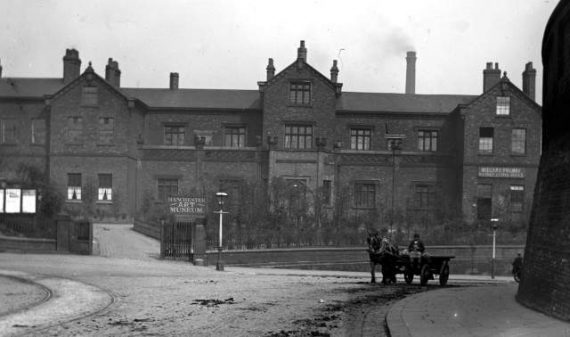
The rebuilt brick Ancoats Hall as an Art Museum
62 : Old House Lately Taken Down in Deansgate
Our tour of what H.G. James identified as the vanishing Manchester of the 1820s continues with another timber-framed representative of the seventeenth-century town. Like number 55, the subject has been ‘taken down’, inclining us to ask whether this lithograph is from memory or previous sketches. Does the cluster of chimneys belong to this building?
61 : North View of the College
Well, shucks, it’s us again – perhaps it’s not a surprise to find a second view of Chetham’s in the James Manchester lithographs series. As we’ve seen, their focus is unquestionably on the picturesque and Olde Worlde, and the 1420s building of what’s still known as ‘College House’ (because it housed the priests of the collegiate church for its first century) certainly qualify as old. You can’t really get this view any more, as the river has been bridged and culverted so it’s now under the cobbles of Walker’s Croft, and the new buildings of the School of Music and the embankment on which the Edwardian extension of Victoria Station stands prevent it. Chetham’s buildings themselves have changed very little, however, event though the view of the lower part of the structure is obscured by lean-tos and sheds.
60 : Old House, Market Street
Back among the antiquities of Market Street today with this timber-framed building. No 57x gave us the view from the southerly end of the street, and here we’ve zoomed in on the detail of Hyde’s shop-front. The display windows seem to have been added to increase the available view of the goods for sale, and the opening at the right-hand side at street level seems to be a buttery in both senses, with its array of barrels and advertisement for Sligo butter. The upper floors of the building at the right-hand side of the frame are extremely elaborate, and must have been part of quite a high-status building.
59 : Blakely Hall
Blakely Hall, or as we would now spell it, Blackley Hall (despite the fact that the first syllable rhymes with ‘Blake’ rather than ‘Black’) was demolished in 1815. Blackley was not industrialised particularly early, and in this case there is a suggestion that hauntings by the ghost of ‘Old Shay’ may have had something to do with the building’s demise. In multiple occupation by then, and perhaps in poor condition, the desire of a William Grant to have somewhere to put his new printworks might be a better reason for the demolition. As part of the area’s timber-framed past, it was a draw for the James Litho Press.
58 : Hulme Hall
With a return to more conventional counting methods we arrive back at Hulme Hall. As we saw with nos. 38 and 39, Hulme Hall clearly drew the artist’s eye before its demolition in 1840. It’s no surprise to find it here in the James lithography series among the other totteringly eccentric timber-framed subjects. It does seem a particular shame that it should have been cleared away.
57x :Southerly view of Market Street
We cannot blame the H.F. James Lithographic Press for the bizarre numbering eccentricity here. It seems to be entirely a piece of Chetham’s mathematical reasoning that makes 57x come between 57 and 58. Those whose job it is to retrieve library materials here for readers will not be remotely surprised, as the whole ‘system’ is made up entirely of exceptions to incomprehensible rules invented in the deeps of time by librarians whose bones have long turned to dust. Having got over this shock, we can look at a Market Street that seems to twenty-first century Mancunian eyes to be more like an idealised tourist board sketch advertising trips to York. The one trade on display (and we think of Barritt the saddle-maker, who died just about the time this print was made) is a hand-craft skill from the age of the horse, the most modern-looking building portrayed looking as if it is from a previous century, most from two or more centuries ago. Did anyone dream of the Arndale?
57 : Residence of the Head Master of the Grammar School
Our journey through H.G. and H.F. James’ lithographs of disappearing Georgian Manchester continues. As we’ve seen, they seem certain their customers will have no interest in the industrialising city around them, the Manchester of Peterloo, hot-bedding workers crammed into cellars and working twelve-hour shifts in ever larger factories. Nostalgia sold, as it still sells, and avoiding the fear-inducing nature of a changing world is as attractive to us as to them. With the amateur philosophy out of the way, we do have a pleasing view of the Manchester Grammar School High Master’s house, another timber-framed and gently decaying pile, with the east end of what is now the Cathedral appearing to our left at the end of Long Millgate. The rear windows of the house would have looked across the yard of Chetham’s, with the ancient buildings housing school and library to the right.
56 : Antiquities lately found at Hulme
The James lithographs continue in this break with the succession of the tottering and timber-framed architectural past into archaeology, or at least into what seems to be taken as buried treasure. We have no sense of the scale of the objects, nor much to suggest what period to attach them to. The Library does have its own stone head, and we weren’t able to get any conclusion about dating from the experts on him either. Has any reader any memory of seeing these finds in recent times? Do let us know.
55 : Old Buildings taken down near Strangeways Bridge
Today’s image follows on with the James lithographs series, and again they have sought out the picturesquely decaying. Like Crumpsall Hall (54) and the Woolpack (53), the tumbledown nature of the buildings seems like a comic-character version of Piranesi, exaggerated and unlikely; like some of Thomas Barritt‘s work, we seem entitled to ask if it was drawn from life. Does ‘taken down near Strangeways Bridge’ mean ‘we drew this before they went’? We can, however, be sure of the artist’s conviction that this gently decaying picturesqueness, pointing directly away from the violent changes overtaking the town as it industrialised, would find a ready market. Similar inspiration struck John Ralston with a not dissimilar collection of buildings near the Irwell bridge in number 92.
54 : Crumpsall Hall
H.G. and H.F. James continue their tour around the picturesque with Crumpsall Hall, ‘formerly’ as they remind us, ‘the residence of Humphrey Chetham Esq.’ Like number 52, this brings us close to home at Chetham’s, where the portrait of Chetham looks down with something hard to characterise as approval from the Reading Room wall. Born in 1580 as a middle son into a family of what the age would have called ‘the middling sort’, he went to the Manchester Grammar School next door to the buildings his bequest would eventually buy, borrowed a moderate sum and became a hugely wealthy and successful cloth-merchant. He had several residential properties by the time of his death. The ‘Esquire’ went a little further than the now dying convention of adding it to the names of male adressees on envleopes; it’s the basis of his claim to use a heraldic achievement as his personal arms. The Hall was gone by the late nineteenth century, but its park is still a valued local resource.
53 : The Woolpack, Deansgate
The James lithographs continue with their 1820s visits to the picturesque and the venerable in Georgian Manchester in this scene. This seems an old inn as Mervyn Peake might have imagined it, looking as if it might tumble into Deansgate at any moment. As we’ll see later in the Scrapbook (itself a Bridgewater creation), Manchester was at this date being transformed by the cheap coal coming in up the canal from the neighbouring mines, moving factory production to coal-fired, steam powered working all year round. H.G. and H.F. James avoid this altogether, and must have been confident in the nostalgic feelings of the print-buying public.
52 : College Old Gate and Grammar School
Close to home with today’s image, the H.G. and H.F. James partnership pictures the gate of Chetham’s. The old gatehouse is still the only way into the site in current use, but it’s doubtful if a single thing in this 1820s sketch of the 1420s entrance is still visible today. The eastern face of the gatehouse looking onto Long Millgate is entirely refaced (albeit with pretty much matching stonework), and all the other buildings have been swept away. The ‘College’ means the accommodation for the Collegiate Church, which is what Chetham’s buildings were first erected for; the Grammar School means Manchester Grammar School, now in Fallowfield on Old Hall Lane, but the view here shows its old home on the right hand side of the picture. If you stand in Long Millgate now, more or less the same space is occupied by the security lodge; to the left of frame now stands the 1860s extension to the Grammar School, vacated in the 1920s, damaged in the war, a teacher training establishment in the post-war years and now part of Chetham’s School of Music.
51 : St Augustine’s Chapel
St. Augustine’s was on Granby Row, which led from London Road, near the current Piccadilly Station, to Brook Street. It was built in 1820, with the Catholic Emancipation Act still nine years away, and was thus brand new when our now familiar partnership of Henry Gould James as artist and H.F. James’ Lithographic Press issued this image. The Chapel’s successors later stood in York Street, and after that building’s destruction by bombing it was replaced by the current 1960s structure on Grosvenor Square near All Saints. The facade has more of the Georgian Gothick about it still than the many Victorian Gothic churches of all denominations that were to flourish later in the century.
50 : Old House Top of Smithy Door
Smithy Door, now obliterated several times over, was a picturesque corner of the town and depicted more than once. Its situation changed radically with the opening of Victoria Street (not the same alignment as the current one) as these 1811 and 1848 map fragments show (Smithy Door has the white dot). There’s a second James lithograph of it in its earlier appearance, before widening, later in the Scrapbook at number 78. There is a photograph somewhere in our collections that shows a very similar scene, I will add it to this post as soon as I am able to trace it.
49 : Old Church and Bridge from Blackfriars
As with No. 48, the team of H.G. James as artist and H.F. James at the Lithographic Press produce this image of the Collegiate Church, complete with its original tower (it was replaced in the 1860s), and facing the old bridge across the still un-canalised Irwell, with its rocky banks and shallows. Blackfriars is now home to its own splendid stone bridge.
48 : Garrat Hall
This lithograph is the first of several from the celebrated and much reproduced series of drawings of old halls and other picturesque relics of pre-industrial Manchester and district. In this case Henry Gould James (d. 1842) is the artist, working with H.F. James as lithographer and publisher. They were issued in sets of six in 1821, and in 1825 with a title page announcing: ‘This work, comprising a series of the most interesting views of old halls, buildings &c. in Manchester and the neighbourhood : is by permission most respectfully dedicated to Sir Oswald Mosley Bart. Lord of the Manor of Manchester by his obliged and obedient servant H.G. James.’ More of these to come, as the denizens of a rapidly industrialising town realised they were on the way to becoming a much larger city. A further sketch of the Hall by John Ralston is at number 91.
47 : Tradesmens’ tokens
Short of change? The solution for many tradesmen and others was to issue tokens such as these, pictured with great care in another piece of Thomas Barritt’s careful antiquarianism. Enlarging enough to show the dtail, he has also shaded in and provided original sizes in this foray into the small-denomination end of numismatics. People such as Thomas Podmore ‘of Manchester’ were issuing their own halfpennies (and more impressively the odd shilling) across the seventeenth century and up to date with some 1812 pieces. Number 13, and the interesting number 14 issued by ‘Mary Hampson and son’ are unfinished – did he not have an original to hand, or did time simply press? These tokens are still much collected today.
46 : Market Place by Edward Goodwin
The back of this item (and we can rarely see them, as things are pasted in; this has become loose) reads ‘Market Place Manchester, E. Goodwin, 1809’. It’s one of the larger watercolours in the Scrapbook at 430x290mm, and with all due respect to the Thomas Barritt of whom we’re hoping some readers at least will have begun to be fond, it’s definitely one of the more artistically successful. We’ve already seen one piece attributed to Goodwin in no. 39, of Hulme Hall. The best dating we can get for him is a floruit of 1801-1827. One interesting detail of a very picturesque looking Market Place is the ‘Tuesday’s Mercury, Saturday’s British Volu’‘ on the wall towards the left, these being Harrop’s Manchester Mercury and the British Volunteer, both distinctly Church-and-King organs, of which the Library has numerous numbers.
45 : Lt. Col. Chadwick of Healey Hall
We saw a copy of a letter from Col. Chadwick at no. 32, in which he felt obliged to stay at home and ask Barritt to undertake some research at Healey Hall, near Rochdale. John Chadwick was the last member of the family to live at Healey Hall, a magistrate for the Rochdale and Middleton area, and the Lieutenant Colonel of the Royal Lancashire Militia. We’ve seen Barritt take an interest in ‘street life’ characters; here is one of a handful of images of members of the squirearchy who represented Church and King in Georgian Lancashire; magistrate and soldier in this case, magistrate and clergyman in other cases such as that of W.R. Hay (portrait coming up), one of the the Peterloo magistrates whose papers were left to the Library.
44 : Thomas Barritt by Charles Pye
As we launch an entire life and works of Thomas Barritt online today in partnership with Peter Lindfield of MMU‘s Centre for Gothic Studies, it’s a fitting chance that brings us the only picture of our cork-legged saddler historian by anyone approaching the status of professional artist, in this case Charles Pye (1777-1864), who gives us a rather steely-eyed Barritt published in April 1820, six months before his death in October. His antiquarian activities are to the fore, not his trade or his family, with his helmet, the ‘sword of the Black Prince’ and the horn. He seems to be wearing a riding habit, and carrying a crop rather than a stick – is this an attempt to edge him closer to the world of heraldry and knighthood that he could never really be a part of? He has the unqualified support of scripture at least in ‘I have considered the days of old, the years that are past’, from Coverdale’s Book of Common Prayer version of Psalm LXXVII, Voce mea ad Dominum, verse 5. Please visit the page and see the videos!
42 & 43 : Silhouettes
Two for the price of one today in this pairing of silhouettes, one ‘hollow cut’ with the whitish paper showing through the black card, the other ‘cut and paste’, in which the card that was cut out is pasted to the paper. The eighteenth and early nineteenth centuries were the golden age of the silhouette, photography edging it out as a mainstream way of recording someone’s image as time passed.
41 : Departed Merit
A large broadside lament for Thomas Barritt, printed with the same profile wood engraving, contrasted by the author of the text as a ‘rude engraving on wood’ in comparison with the engraved portait by Charles Pye (1777-1864). The poem in number 40 is included in the text, but with it a much fuller biography, and account of the ‘impressively solemn’ funeral, with the church ‘enveloped in darkness’, the Psalms, Magnificat and Nunc Dimittis chanted and ‘between thirty and forty gentlemen, each self-provided with silk hat-bands and gloves’ in attendance of their own accord. Click through to read the whole thing and be transported back to the candle-lit gloom of the Collegiate Church as he was laid to rest.
40 : In Mancunium there lived a man …
This little poem is easily imagined to be a commemorative item issued on his death. Rather (as we find in no. 41 above) it was written ‘nearly twenty years ago’ (i.e. about 1800) to extol the virtues of Thomas Barritt (1743-1820), its self-appointed but nonetheless respected antiquarian and historian, as well as one of its saddlers. The verses here, unlikely though they are to unseat Byron or Elizabeth Barrett Browning, seem full of genuine warmth towards this unusual artisan antiquarian; how many gentleman contemporaries made their own coat of mail, or ‘helmets and shields to rival Greece & Rome’? The verses were written, again in the words of the author of Departed Merit, ‘in the past tense, to give them the air of antiquity which their author aimed at [and] … for the same reason in the old black character’ – in what we often now call ‘Gothic’ script.
39 : Hulme Hall in colour
Hulme Hall again, albeit a much more easily understood picture than yesterday’s faded sketch. It’s hard to feel a walk by the Irwell might have been pleasanter then than now, though it might already have smelled rather polluted. This time we have a respectable named artist too, Edward Goodwin (1801 – 1836). This is one of two items in the scrapbook attributed to him, and fits into a pattern of scenes with ancient buildings he created. Is it time to restart rowing picnics on the river?
38 : Hulme Hall in pencil
An unsigned and unattributed pencil sketch of Hulme Hall (not to be confused with the University of Manchester hall of residence). Hulme Hall was demolished after purchase by the Duke of Bridgewater, who bought this ancient house on the banks of the Irwell at a good price in 1765, as part of acquiring lands for the Bridgewater Canal. It was demolished in 1840 amid further developments around the canal. The sketch is in a faded state, so no apologies are offered for ‘improving’ the contrast so you can see it better here. More Hulme Hall tomorrow!
37 : Manchester Watchman
Another contribution from Thomas Barritt: ‘A Manchester man who watched by rotation with the old Brown Bill by order of the Magistrates, An. 1790’. The town watch gave a degree of night-time security, and there’s perhaps a touch of the antiquarian nostalgia Barritt often exhibits in the apparently affectionate language about the ‘old Brown Bill’, a weapon that that a combatant in the Wars of the Roses would have readily recognised. A very similar weapon, the head of which appears at least to be authentic, hangs in the Baronial Hall at Chetham’s.
36 : Roman history through a coin hoard
Thirty-sixth in the Manchester Scrapbook, a remarkable little history of the great Roman emperors inspired and illustrated by ‘Seventeen silver pieces plow’d up in the Neighbourhood of Ormskirk (now in the possession of Mr. James Ryland Watch maker) in March 1790’. Like much of what we’re offering in the Scrapbook, the immediacy and antiquarian interest distinctly outweighs the artistic talent on display here, together with a succinct ‘1066 and all that’ moral judgement: ‘Antoninus Pius the Empr. who succeeded Hadrian was a good prince’. The dismal handlist to the Scrapbook makes no attribution of authorship, but on comparing notes with Barritt scholar Peter Lindfield (of whom more soon) we will attribute it to Thomas Barritt.
35 : Election of Churchwardens, 1790
Thirty-fifth in the Manchester Scrapbook, the results of the elections of churchwardens across Manchester in 1790, when the town was still in the Diocese of Chester, and the Collegiate Church was yet to become Manchester Cathedral. As befits the huge size of the parish and Collegiate Church, Manchester itself has no less than three churchwardens and four assistants listed. In December of the same year, the eccentric Joshua Brookes (portrait coming up) joined the Collegiate Church, and became famous for his eccentric wedding services, including multiple couples and the use of random proxies in the event of grooms not being to hand.
34 : Sir George Booth of Dunham
Thirty-fourth in the Manchester Scrapbook, this not desperately distinguished image of Sir George Booth, of Dunham, First Baron Delamer, Presbyterian, Royalist and leader of a pro-Restoration rising in Cheshire in 1659. The image is unsigned, but dated rather more precisely than usual to 6 September 1782. The bald and bare typescript list that offers itself as a catalogue of the Scrapbook is not willing to hazard an attribution of penmanship; as one of the better bit-part players in the Restoration, he was later painted by what Christie’s proposed as ‘circle of Godfrey Kneller’ – which would you prefer to hang in your long gallery?
33 : Hanging Ditch
Thirty-third in the Manchester Scrapbook, another of Thomas Barritt’s 1819 views of the disappearing old town: ‘Old house in Hanging Ditch corner of Fennel Street over the window near the two figures was the following words cut in the wood “This house was built for and by George Thorp 1659”’.
32: Healey Hall discussed
Describing itself as a ‘Copy of Letter from Col. Chadwick of Healey Hall, Rochdale to Thomas Barritt the Manchester antiquary (who died 1820)’, this visually unprepossessing letter is still full of interesting detail. Colonel Chadwick was evidently hoping to use Barritt as the courier for the not unimpressive sum of £300, which he would have taken himself ‘but Mrs C would not hear of it with my sore throat’. There’s more to the mission for Barritt, however, who has no fewer than eight detailed research questions to answer about the building once he gets there. A portrait of the demanding Colonel is coming up at number 45.
31 : Broughton Hall by John Ralston
The brief and dismal typescript index to the Scrapbook calls this a ‘sketch in sepia attributed to J. Ralston’. Who might have done the attributing is not mentioned, but John Ralston (1789-1833) left several other oils of the towns of Manchester and Salford, and his work on local scenes was widely distributed in a series of prints lithographed by engraver and printmaker Agostino Aglio (1777-1857); we’ll see more of both men’s work later on. There is another view of the Old Hall at number 77. At this time the hall was the home of Rev. John Clowes, who was fellow of the Collegiate Church (now the Cathedral), Rector of the now-vanished St John’s Church, and the subject of portrait by Joseph Allen (1769-1839), the same artist referred to in no. 30. The picture now hangs in the Library, in some need of a thorough clean.
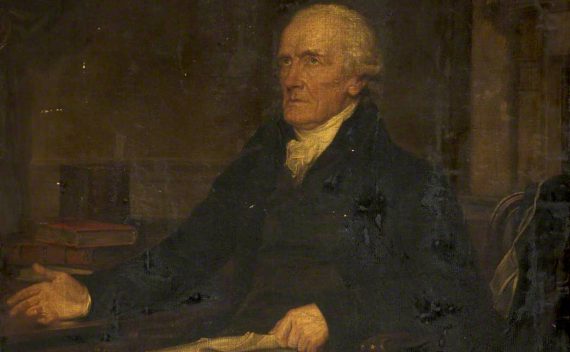
Allen, Joseph; Reverend John Clowes (1743-1831)
30 : Manchester Literary and Philosophical Society
The Manchester Literary and Philosphical Society is a venerable institution going back to 1781, and here found honouring an early president: ‘We the circumscribed, members of the Literary & Philosophical Society of Manchester, as a mark of respect for their learned and worthy President request that he will do us the favor to sit for his Portrait to Mr Allen [Joseph Allen (1769-1839)]’. Would a member of the Society, or other interested party, be able to tell us which president, and help us tie down the date?
29 : Ordsall Hall
Twenty-ninth in the Manchester Scrapbook, a change of location and artist, this is a watercolour of Ordsall Hall attributed to Edward Goodwin with a question mark in the Scrapbook handlist. Not a great deal seems to be known about Goodwin, who is described by one art-house as a ‘shadowy figure’, but who was involved in the foundation of the Liverpool Academy. Our much-loved neighbour, Ordsall Hall, however is far from shadowy – don’t forget to see it as well as us at Chetham’s when it all becomes possible again. Further images of this rare survivor of the old halls of the region follow later.
28 : Houghton of Hoghton Tower
Twenty-eighth in the Manchester Scrapbook, and we’re in home turf for Thomas Barritt’s genealogical and heraldic interests with a visual pedigree of the Houghtons of Hoghton Tower. We normally offer a transcription of the caption in these posts, but the y-umlaut combination is beyond us today. The update from James I mentioned relates to the story of his knighting of ‘Sir Loin’ on a visit to Hoghton after enjoying some beef. You can still visit Hoghton Tower (in ‘normal’ times), where it is posited by some that Shakespeare might have spent time a youth. The family, like so many in Lancashire, had a hard time juggling its loyalty to their pre-Reformation faith with the desire to stay in royal or at least government service. The caption here is in a sort of ‘Gothick’ English that it’s easy to suspect Barritt has more or less confected himself. We were glad to have an interested enquiry sent on Twitter about this image, asking if there is more of it – sadly not, this is the whole thing; but it does remind us to remind readers to check our catalogues for things that may interest or help with research.
27 : Not a Snuff Box
Twenty-seventh in the Manchester Scrapbook, and we’re off into new territory with Barritt as he brings us a picture of an item of antiquarian interest and speculates about its original use.’ A snuff Box made of a Horn with a Brass Top or Cover with the Date of 1453, is in the Possession fo Mrs Sandford-St.John’s. NB Tobacco is generally believed to have been first introduced into England by Sir Walter Raleigh A.D. 1585. – Ergo, this could not have been a Snuff Box in 1453. – but it might have been a Powder Horn’.
26 : Levers House
Twenty-sixth item in the Manchester Scrapbook, and Thomas Barritt’s antiquarian interests take us back to another significant Manchester building that went during his lifetime: ‘Levers house in Fennel street Manchester adjoining the Dog and Partridge public house once the residence of Dr Deacon whose sons head along with Siddals was in the year 1746 fixed upon the Old Exchange the house was bought by Mr Jno. Marsden who pulled it down and erected the present premises on the spot.’ The ’45 Jacobite rising would have found Barritt only a baby, but those who raised him would have seen the grisly spectacle of Hanoverian vengeance for themselves.
25 : Pool Fold Hall
Twenty-fifth item in the Manchester Scrapbook, another of Thomas Barritt’s 1819 series of watercolours of the disappearing town around him: ‘Pool Fold Hall an ancient seat of the Radcliffs about the year 1641 pulled down 1811’. Pool Fold was more-or-less where Manchester’s main branch of Boots is now, and acted at one time as a prison for the region’s imprisoned Catholics. A member of the family was one of the first Feoffees of Chetham’s in Humphrey Chetham’s will of 1653.
24 : Bear Bating
Twenty-fourth in the Manchester Scrapbook, and like no. 23 a less than edifying scene: ‘Bear beating with Wheel barrows and Bladers opposite the Old Boars Head Hydes Cross about the year 1749’. Unlike the prostitute ducking, the bear-bating seems to be a ‘boys will be boys’ event, either representing social exclusion of women, or as we might conclude more positively, the women of the town could think of something better to do than whack a large animal with an inflated bladder on a stick.
23 : Nastiness at the Daub Holes
Twenty-third in the Manchester Scrapbook, and we’re still amid the short sequence of watercolours painted by sadler-antiquarian Thomas Barritt in 1819, when he was in his mid seventies. We leave the picturesque very much behind here as he reaches beyond his own memory (he was born in 1743) to recreate a very grim scene, now according to the caption a thing of the past: ‘The custom of Ducking prostitutes in the Infirmary pond (then called the Daubholes) the custom was laid aside some while before the Infirmary was erected’. There seems no consensus about exactly when this horrible punishment at the flooded claypits ceased although Emily Cockayne in Hubbub finds that there was enough demand that a new ducking stool was put ‘in the usual place’ in 1738, bringing us to within five years of Barritt’s birth. How the crowd is reacting is hard to judge – two women certainly seem to be boxing a man’s ears at the foot of the scene – a client of the unfortunate woman on the stool? Building of the first Infirmary started in 1752. If you compare the two, it’s hard to believe this scene held at Manchester Archives isn’t a copy of Barritt’s work.
22 : Old House of Correction
Twenty-second item in the Manchester Scrapbook, ‘The Old House of Correction at Hunts bank pulled down when the present New Bayley was erected in Salford’, our by now old friend Thomas Barritt signing and dating 1819 again, and thus putting this image into a short series of small watercolours (that seem to have been an outlet for the elderly Barritt to portray the town he remembered. We are, as he might have put it ‘going back a bit’ here, as work on the New Bailey prison began in 1787, and it was old enough to need extensive additions by 1816, three years before this was painted. The prisoners hanging their baskets out of the windows in the hope of getting fed might well all have been gone by the time Barritt recorded this at the end of a long life. There seem elements we’d like to know more about – what’s happening with the apparently runaway horse, for example? But to the right, another peaceable fishermen seems to be enjoying the unpolluted #Irwell, already beginning to be a thing of the past in 1819.
Richard Wright Procter, whose 1874 work Memorials of Manchester Streets we will dip into from time to time, reproduces this picture and devotes a passage to it:
‘A comical yet truthful picture of the House of Correction may be seen in the local scrap-book at Chetham’s Library, the oldest free library in England, where there are numerous curiosities remaining … Adjoining the dungeon, and nearing the church, stands the College Barn, taken down subsequent to 1763 … The literal, sometimes ungainly, but ever-reliable pencil of Mr Thomas Barritt has rescued the peculiar features of this scene.’
21 : Old House and Dyehouse, Long Millgate
Twenty-first in the Manchester Scrapbook, and this time Thomas Barritt is in a kind of grisaille palette for his watercolour. The scene is ‘Old house and Dyehouse fronting the bottom of Long Millgate pulled down Ano. 18….’ This time we can be sure we’re reminiscing, as we have the work dated to 1819, and the idea must be that the pulling down happened with in the preceding couple of decades. By the time of this little run of 1819 works, Barritt was in his mid seventies, and evidently aware that the town was beginning to change fast. Does anybody want to hazard exactly where this is? Not too sure what fronting the bottom consists of in this particular topographical use.
20 : Sandstone city on the Irwell
Thomas Barritt’s second view down the Irwell of the Georgian era, with a growing town, but like no. 19 still one of pink sandstone on the banks of a rocky #Irwell river. The corner of Chetham’s is visible towards top left, and this time we’re slightly upstream with the stone bridge into Salford and the Collegiate Church (to become the Cathedral in 40 years or so) rather than the alarming-looking timber bridge and St Anne’s. There are very few views of this kind from the era, although again Barritt doesn’t date his work here. This view is copied exactly in the James engraving number 71.
19 : Blackfriars Bridge
Nineteenth in the Manchester Scrapbook, and one of Thomas Barritt’s most interesting scenes for those trying to imagine the Georgian city. Looking down the Irwell, wide, shallow and rocky-sided before its canalisation in the C19, we see the pink stone buildings clinging to the side of the bluffs, and centre-stage the Blackfriars footbridge. This was built in 1761, and replaced in 1820 – the year of Barritt’s death – by the current stone bridge, probably to the relief of all those who had to make the crossing. Now herons and cormorants have come to fish in the river again, we’re a little less surprised to see the foreground figure with his fishing rod. This view bears very interesting comparison with number 70.
18 : Hanky Panky
Hanky Panky in this 18th item from the #Manchester Scrapbook. 1818, and hard times and industrial tensions seem to have sparked the interest in this reminiscence of direct action from forty years previously. If Mr Miller’s story is right, the civic authorities and workers seem to have been united in regarding handkerchiefs as ‘Manchester goods’, and not for others to try to poach trade in. The item is supplemented by another Barritt view of the ‘New Church Inn”, cf yesterday’s No 17.
17 : The Dog and Partridge
Seventeenth in the Manchester Scrapbook, ‘The Dog & Partridge public house in Fennel Street & the adjoining public house corner of Toad Lane called the new Church or St. Anns from the sign’. Thomas Barritt again providing us with the date, 1819, and a piece of reminiscence that seems to follow on closely from no. 16. St Anne’s was consecrated in 1712, but perhaps still regarded by the clergy of Manchester Collegiate Church (now the Cathedral) as a rather annoying new kid on the block; relations weren’t always good. There’s enough detail in the pub sign to see that St Anne’s tower once had a complete further stage above the present configuration. Again, for those of us with the benefit of hindsight, there’s perhaps a little extra poignancy in the now elderly Barritt’s recording of the timber market town already being swept away by vastly larger economic systems in the year of Peterloo.
16 : Old Buildings took down … nostalgia in the year of Peterloo
Sixteenth image from the #Manchester Scrapbook, Thomas Barritt again, this time unusually signing and dating. ‘Hilton, Saddler’, was presumably some competition for Barritt’s own business as a saddler. 1819 was Manchester’s fateful year in C19 politics, the year of Peterloo. We don’t know if Barritt, who was to die in 1820, was painting this nostalgic scene ‘Old buildings took down to make way for the Exchange and Exchange Street Manchester’ before or after August, but the political atmosphere was tense from the beginning of the year. Modern historians often wish many sources would pay more attention to Peterloo, and perhaps less to their individual concerns; perhaps Barritt’s memories were by then more important to him than the hints of what was to come. See also number 69.
15 : Clayton Hall
15th image from the #Manchester Scrapbook, a sketch tentatively attributed to Manchester artist John Ralston (1789–1833) in the terse and unlovely typescript list that accompanies the book. If you’re an art historian who has an interest in C18/C19 Manchester, please come and spend a day or two at Chetham’s Library when it’s possible, and help us do some much needed chasing up on the artworks it contains. The subject is one of the houses of our founder, Humphrey Chetham (1580-1653), Clayton Hall, now surrounded by the modern city. More pre-industrial Manchester follows shortly!
14 : Thomas Battye and the Red Basil Book
Fourteenth in the #Manchester Scrapbook, a portrait of Thomas Battye, ‘An enemy of Parochial Peculators’, signed J.B. and dated 16 June 1807. This is a change of pace from all the Thomas Barritt we’ve seen so far, but was done on the centenary of the publication of Battye’s 1797 ‘The red basil book, or, parish register of arrears, for the maintenance of the unfortunate offspring of illicit amours; with a farther developement [sic] of most shameful and unprecedented acts of abuse in the town of Manchester.’ Clutching the book behind him, Battye evidently stood for civic and fiscal propriety 100 years after his publication. His directness in avoiding the euphemism ‘orphans’ for ‘the unfortunate offspring of illicit amours’ was presumably what took him into the realms of enquiring into what was rotten in the state of Manchester’s public finances and the officers who were in charge of it. Thank goodness this sort of thing could never happen with public finances today.
13 : Ogden, fish porter
The thirteenth of the #Manchester Scrapbook images, Thomas Barritt again with another ‘character’ from turn of the C18/19 in the city, ‘Ogden fish porter for Fentons formerly of the Market Place Manchester a well know character his brother having been an intimate of the Prince of Wales’. A story straight out of Blackadder the Third? Can any reader find us the Ogden who was Prinny’s pal? Thirty or forty years later, when Marx and Engels were settling down to begin their partnership in the Library Reading Room, they would have put Mr Ogden into the proletarian class, and that’s not where the future George IV usually fished for friends.
12 : Little Major
‘Little Major the Toll Keeper at the New Bailey Bridge’ is the caption for another of Thomas Barritt’s water colours of his fellow townsmen, and again his subject is not chosen for rank or wealth, usually the main criteria for the professional artist. Free of the consideration of patronage, even if again Barritt’s skills might not be the greatest, we get another image of a figure no professional would ever have been commissioned to paint, but who must have been enormously familiar to the town dwellers and visitors as the custodian of one of only two routes across the Irwell into Salford.
11 : Bloody Murder! Selling news
The eleventh item in the #Manchester Scrapbook, a rare picture of a street #ballad seller. Clutching a sheaf of the cheaply produced items, the title “A bloody murder” and the seller’s cry “The most shocking account that you ever read in your life time” tell us the methods haven’t changed over much when it comes to shifting volume to the public. The handles to the scrapbook has this as ‘Coloured etching by ?Thomas Barritt’, and we can’t conclude with certainty about the original artist.
10 : Little Billy and Sweep
Tenth item in the #Manchester Scrapbook, as promised to #MuseumFromHome and now to #MuseumWeek . This is listed in the handlist to the Scrapbook as a ‘water-colour etching’ by our now-familiar Thomas Barritt. The hand doesn’t look like his usual, but these two are ‘Little Billy’ and ‘Sweep’, looking perhaps a bit down on their luck if not down in the mouth. As we’ve said, Barritt may not have been a stupendous artist, but these two rather lost-looking people seem to call on our sympathy, don’t they?
9 : Mourning Thomas Baritt
The ninth item in the #Manchester Scrapbook, and far less happy than yesterday’s book plate, this is a little mourning card for the dominant creative force in this first couple of pages of the book, Thomas Barritt, who as we read here, died on 29 October 1820, nearly 200 years ago, to be buried in what’s now the Cathedral on 3 November. The card transcribes the inscription on his tomb, in which he was buried by torchlight with a number of what the age called ‘respectable’ citizens in attendance: ‘Thomas Barritt, a profound antiquary, and a good man, died, honoured and lamented by all ranks of society, Oct 29th.’ There’s a decent Wikipedia potted bio if you Google it, with links to other biographical snippets. Not the last we’ll hear from him, as there’s a bit more of his work coming up.
8 : He brings ancient things to light
The eighth item from the #Manchester Scrapbook today, and we’re with Thomas Barritt (1743-1820), saddler and antiquarian, again. Here the item on the left is that in the scrapbook, an etched bookplate dated 1794; on the right is the same plate from another scrapbook in the Library, this time with hand shading. Barritt chose to portray himself surrounded by his collection of antiquities, including the sword here marked ‘Edvardvs’ (he believed himself to possess the Black Prince’s sword), and with the Gothick-style motto ‘Profert Antiqua in Apricum’, ‘He brings ancient things to light’. This is an interesting insight into his self-image. I can’t trace the motto beyond 18th-century Swiss medallions at the moment, do tell us here if you know the source. He offers his own paraphrase or interpretation in MS on the right-hand item, making it seem more personal still: ‘I have thought of the days of old and the years that are past’. There’s a little more on the other scrapbook in our blog.
7 : Hanging Ditch
Number seven of the images from the #Manchester Scrapbook, another small #watercolour by Thomas Barritt (1743-1820), with whose name regulars will be becoming familiar. This is one of his street scenes, captioned ‘Hanging Ditch from Hunters Lane to Old Millgate with the Mount in front of Dr Byrom’s house’. Hanging Ditch was a watercourse that gave its name to this row – the Hanging Bridge, the medieval bridge that crossed the ditch and gave access to the south side of the Collegiate Church, can be seen in the Cathedral Visitor Centre still, but everything depicted here is long gone.
6 : Restoration plate
The sixth item from the Library’s #Manchester Scrapbook, which must have caught the eye of the compiler (and eventual donor to the Library), Francis Egerton, 1st Earl of #Ellesmere. The Stamfords and Egertons were neighbours in Cheshire and the fortunes of the families were intertwined. #dunhammassey # The caption reads: “The above is the representation of an earthenware Dish in my possession 20 Inches in diamiter – It originally belonged to the Earl of Stamford & most probably was made for the Family & used on the 29th of May in commemoration of the restoration of King Charles 2nd for whose portrait it is intended Wm. Yates”
5 : Execution handbill
Do you love a parade? Fifth image from the Library’s #Manchester Scrapbook, and this time we’re in print. Now text normally makes a pretty poor picture, but here we’re looking at some genuine use of typography for illustration. Not only does it tell us about poor James M’Namara’s execution (there’s an article about this in the learned journal Manchester Genealogy, 2008, but working from home means we don’t have it to hand now, sorry for lack of deets), but it draws a picture in type of the arrangement of the ‘procession’, with the station of each javelin man, sheriff’s officer, and of course the ‘star’, the unfortunate executee. Justice not only being seen to be done, but providing a full scale public entertainment. Nasty.
4 : Nathan Wood, patten maker
Fourth image from the Library’s #Manchester Scrapbook, and it’s a Thomas Barritt’s #watercolour on paper again, as we promised for #MuseumFromHome. This time, after an apothecary and two scions of faded Baronet families, it’s a fellow tradesman in the frame, patten-maker Nathan Wood. You can see his wares on the table, iron-shod pattens with a thick wooden sole and straps to hold them on over your shoes so you could keep the muck of the street and gutter off your footwear and shed them on arriving at your destination. Out of his window you can see what Barritt knew as the Collegiate Church, #Manchester Cathedral to us now. Barritt’s shaky grip on dates (never wonderful for a self-professed historian) comes out again in the caption: ‘Nathan Wood Patten Maker Hanging Bridge Manchester died [blank]’
3 : Sir John Prestwich, Bart.
Third image from the Library’s #Manchester Scrapbook, another of Thomas Barritt’s small series of little #watercolours on paper, as we promised for #MuseumFromHome. The rapidly burgeoning town of Manchester in the latter half of Barritt’s life (b.1743, d.1820) is very thinly recorded in visual terms, particularly with regard to people; Barritt’s interest in heraldry and #genealogy (though he was a tradesman rather than a gentleman) seems likely to have brought him into contact with this subject, flourishing his family tree. Caption reads: ‘Sir John Prestwich Bart. last of the ancient family of Prestwich of Prestwich and Hulme near Manchester living Anno 1793, a lover of Heraldry & Antiquity’. Barritt’s work is seldom dated – this leaves us to guess whether it’s the date of the watercolour, or whether this was from memory.
2 : Apothecary Thyer
Here’s our healthcare hero from Chetham’s Scrapbook, ‘Apothecary Thyer returning from his garden at Gaythorn near Knot Mill Manchester’. Another character sketch by Thomas Barritt, who (while he is not always the greatest artist in capturing faces) seems to suggest the apothecary’s magnificent nose might have been of particular use in sniffing out simples for his medicines. The watercolour is undated, as so much of Barritt’s work is.
1 : Sir Jonathan Briggs, Bart.
Here’s the first of the promised posts from the Library’s Manchester Scrapbook, compiled by the Earl of Bridgewater and given to us in 1838. This is the first item, one of a series of small water colours (108x160mm for the keen) by Thomas Barritt (1743-1820), who has signed but not dated it. Barritt may have been no great artist, but records much of Georgian Manchester no-one else did. He was fascinated by genealogy and heraldry, and published on the subjects. The caption reads ‘Sir Jonathan Briggs Bart. in the excise at Manchester and last of a decayed Baronets family in the county of – ‘ Perhaps he didn’t know the county? Briggs may have simply assumed the title with no proven right to it. Instagram user mostly.churches kindly sent us the results of his research: ‘The baronetcy was assumed by this chap, an exciseman, without authority following the title’s becoming extinct.’ Please do let us know if you have details on any of the images here. Thomas Barritt in much more detail in a series of lectures by Dr Peter Lindfield of MMU.
